Dog Day Afternoon (1975)

In the mid-70s, the US seemed to be lost in a chaotic haze. The optimism of the 60s had faded. Vietnam had exposed Americans to the ugliest realities of the country’s military actions. Nixon had resigned. President Ford didn’t seem to have an agenda. A recession was dragging the economy down. Unemployment was high. And the certainties that Americans had embraced in the post-WWII era had been shredded by years of cultural upheaval.
Against this backdrop, the story of two hapless guys why try to rob a bank and end up trapped inside, holding the employees hostage, seems like a reflection of the country’s state of mind. A desperate story for desperate times.
Dog Day Afternoon was inspired by an actual bank robbery, which P. F. Kluge and Thomas Moore wrote about in a Life magazine article entitled “The Boys in the Bank”. Frank Pierson’s screenplay sticks fairly close to the facts. Director Sidney Lumet felt it was important to keep the film grounded in reality, and in his book Making Movies, he gives his account of how the script evolved over time. According to Lumet, in order create the feeling of real life unfolding on the screen, he told the actors that they needed to play the parts as close to themselves as possible, even encouraging them to wear their own clothes. Taking the director’s lead, one of the actors asked if they could use their own words. Though he had never allowed improvisation before, Lumet agreed.

Still using Pierson’s screenplay as the foundation, the actors were allowed to improvise in rehearsals, and the rehearsals were recorded. Each night, the script was reworked to incorporate dialogue that the actors had come up with during the day. This is likely one of the reasons that the film has such bracing spontaneity. Rather than speaking dialogue, the characters seem to be speaking their own words. Instead of watching scenes in a drama, we get the sense that we’re witnessing events as they unfold. As the botched bank robbery turns into a hostage situation, as the NYPD tries to figure out their next move, as the crowd on the street grows larger, it’s clear that no one is in control and there’s no way to predict what will happen next.

The photography reinforces the documentary feeling. Lumet and cinematographer Victor Kemper employed natural light wherever possible. The bank interiors are lit by fluorescents. For the night exteriors they relied on spotlights from emergency vehicles. And Dede Allen’s crisp, unobtrusive editing gives the film structure without making it seem forced. Dog Day Afternoon doesn’t hit the same beats as the standard Hollywood movie. It has its own subtle rhythm.
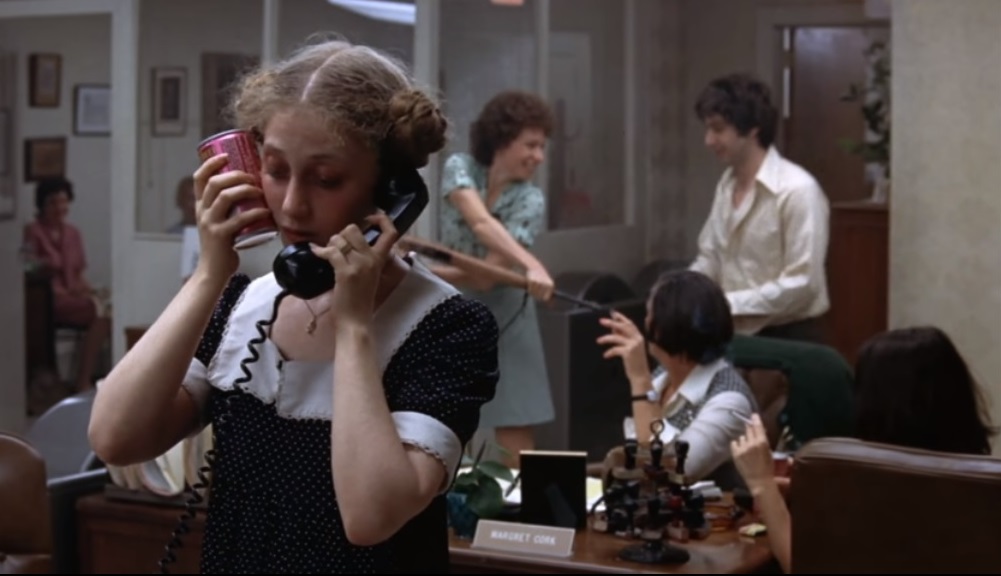
While Dog Day Afternoon was financed by a Hollywood studio, it seems very much a part of the New York school of filmmaking. In the 50s, independent filmmakers working in the city, like Morris Engel, Lionel Rogosin and John Cassavettes, tried to scrape away the gloss and glamour of commercial cinema to capture life as people really lived it. They shot on actual locations using hand-held cameras to capture the look and feel of urban life. In the late 60s and early 70s, Hollywood studios began to back projects that built on this approach, like Born to Win and Panic in Needle Park. Warner Bros. greenlighted Dog Day Afternoon at the peak of this trend. In the 70s American audiences seemed willing to explore the grittier side of urban life. But by the 80s, audiences were running back to safety, and Hollywood delivered a steady supply of comedies and action flicks.

Al Pacino’s performance has been highly praised, and rightly so. There’s a naked vulnerability in his portrayal of Sonny that’s unusual in American filmmaking. But while Pacino is at the center of the story, the film is really an ensemble effort, and even the performers in the smallest roles are vivid and lively. John Cazale is eerily introverted as Sonny’s partner, Sal. Sully Boyar plays the bank manager with an air of exhausted resignation. He just wants to make it through the day alive. Penelope Allen is especially vivid as one of the tellers. She may be a hostage, but she’s not going to let these guys push her around. But to me the most impressive thing about these performers is the way they’re always in character and they’re always connected. Pacino may be in the foreground, but Lumet makes sure that the actors in the background are reacting to whatever’s going on. And as the day drags on, as the tension grinds everybody down, they all seem to be drawing closer together.
As the cop who’s pretending to be in charge of the situation, Charles Durning gives us a man who knows he’s in over his head and is hoping he can bluff his way through this mess. James Broderick is quietly creepy as the stoic, implacable FBI man. He’s just waiting for the right moment to shut these guys down. And Chris Sarandon gives a moving performance as Leon. Sonny may be at the end of his rope, but so is Leon. They may love each other, but they know it’s not going anywhere.
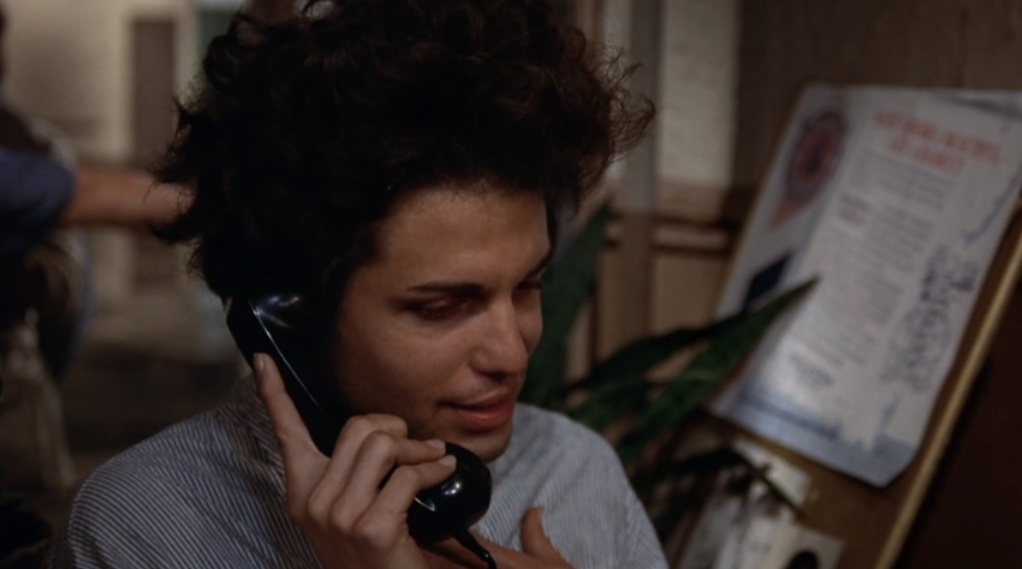
One of the reasons the 70s was such an amazing period in American cinema was that a film this harsh, this gritty, this different, could be a success at the box office. Apparently Dog Day Afternoon resonated with audiences. It is a tense, engrossing film that holds up well today. But I think the reason audiences responded was that Pierson, Lumet and the cast made it a compelling human story. Ultimately it’s not about bank robbers and hostages. It’s about people.

Iré a Santiago [I’ll Go to Santiago] (1964)
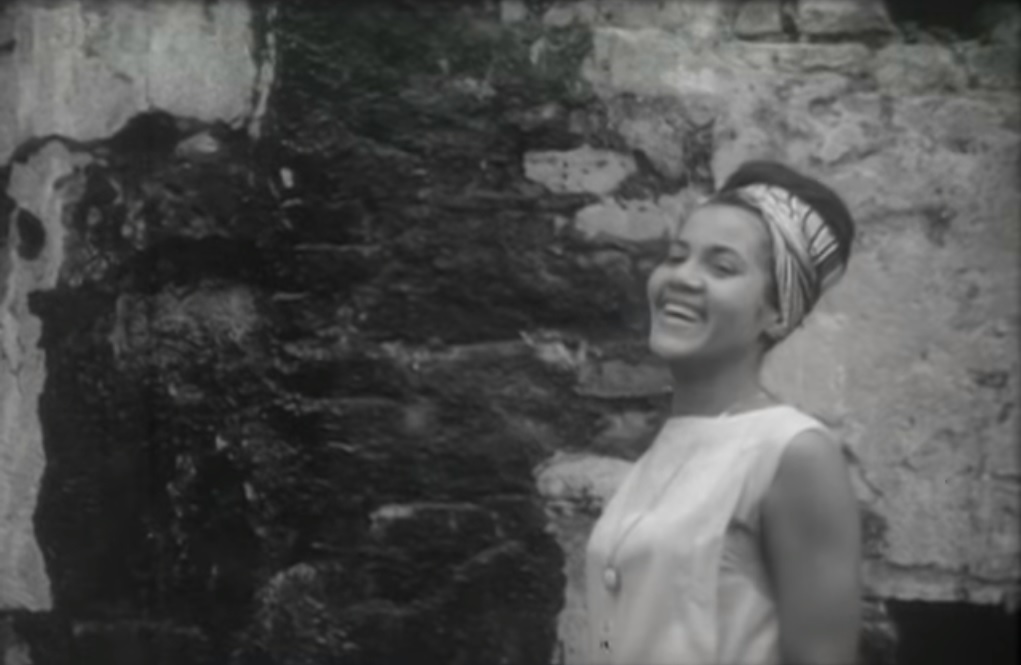
In 1959, rebel forces led by Fidel Castro overthrew Fulgencio Batista and the revolutionary government took control. The new government immediately began its efforts to transform Cuba, with the goal of rebuilding it as a Communist nation. One of the government’s key initiatives was the creation of the Instituto Cubano del Arte e Industria Cinematográficos (ICAIC). Film was seen as an important way to educate and animate the public as the country was entering a period of rapid change.
Just like the first decade of Soviet cinema, the first decade of Cuban cinema after the revolution was a time of exploration and innovation. A number of talented filmmakers came out of ICAIC, but unfortunately few of them are remembered today. One of the most gifted was Sara Gómez. Her body of work isn’t large. During the 60s and early 70s she made a number of short films. She died in 1974 before completing her only feature, De cierta manera. But the work Gómez left behind is well worth looking at.

Iré a Santiago is a joyous short celebrating the people and the culture of the city named in the title. It’s loose, energetic and spontaneous, with the camera wandering through bustling neighborhoods, pausing in a street market, spying on people in a café. The photography and editing are rough, but the images Gómez captures are lively and dynamic. Unlike other documentary filmmakers, she doesn’t try to pretend that she’s standing outside of the world she’s shooting, observing it all objectively. Some people wave at the camera, others try to avoid it. One boy starts dancing when he realizes he’s being filmed. Gómez doesn’t cut these shots out. They show that the filmmakers are part of the life that’s swirling around them.
The film doesn’t have a tight structure. Gómez is interested in wandering around to see what she can find. After spending some time watching people in the streets, she moves on to the bay, and the narrator gives us some brief notes on its history, from the arrival of the Spanish to the beginning of the revolution. Then we get a quick rundown on places of interest, and end up in the middle of the carnival.
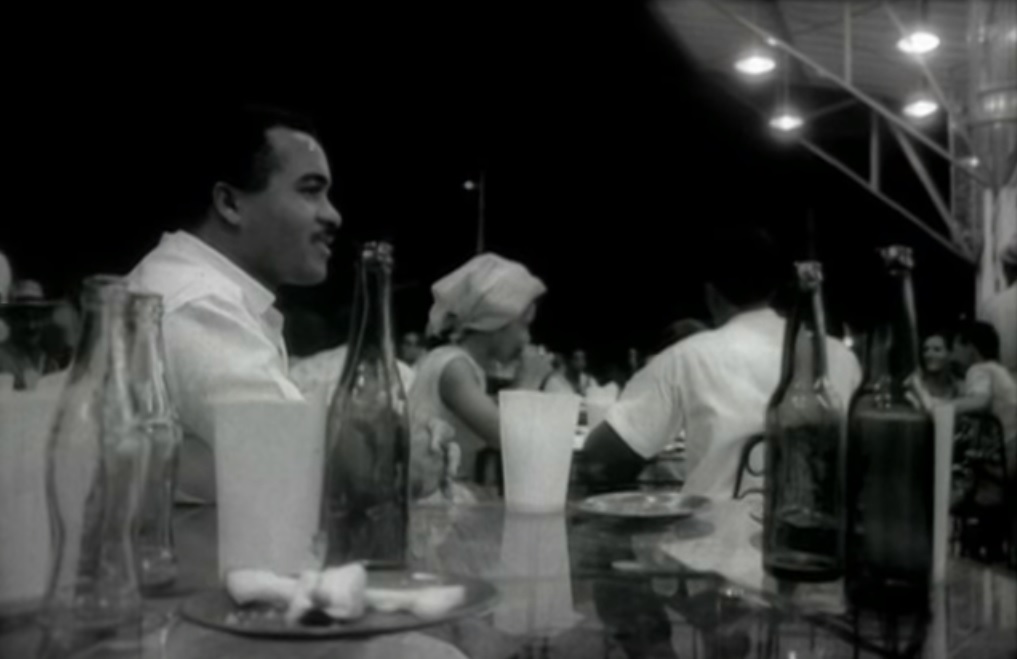
Aside from the cinematography, the other thing that energizes the movie is the music on the soundtrack. It’s an eclectic mix of sweet melodies and dense percussion. And the people move to the music. In the carnival scene at the end, we see a row of men playing congas, a horn section blowing brassy punctuation, and dancers swaying to the driving rhythms. This isn’t just a documentary, it’s a celebration.
…..
The web site ReMezcla offers a short piece on Sara Gómez. In addition to a brief bio, it has links to some of the director’s films, including Iré a Santiago. You should know that the print doesn’t have subtitles, but please don’t let stop you. If you look at the images and listen to the sounds, you’ll be getting most of what the filmmaker is trying to say.
Among the films offered is Gómez’ only feature, De cierta manera. It’s an original and complex movie, and a marvelous piece of filmmaking, but I hesitate to tell you to click the link because the print is terrible. Really what we need is to have somebody track down whatever elements still exist and do a real restoration. This is the only feature we have from one of Cuba’s most gifted filmmakers. It deserves to be seen the way Gómez envisioned it.
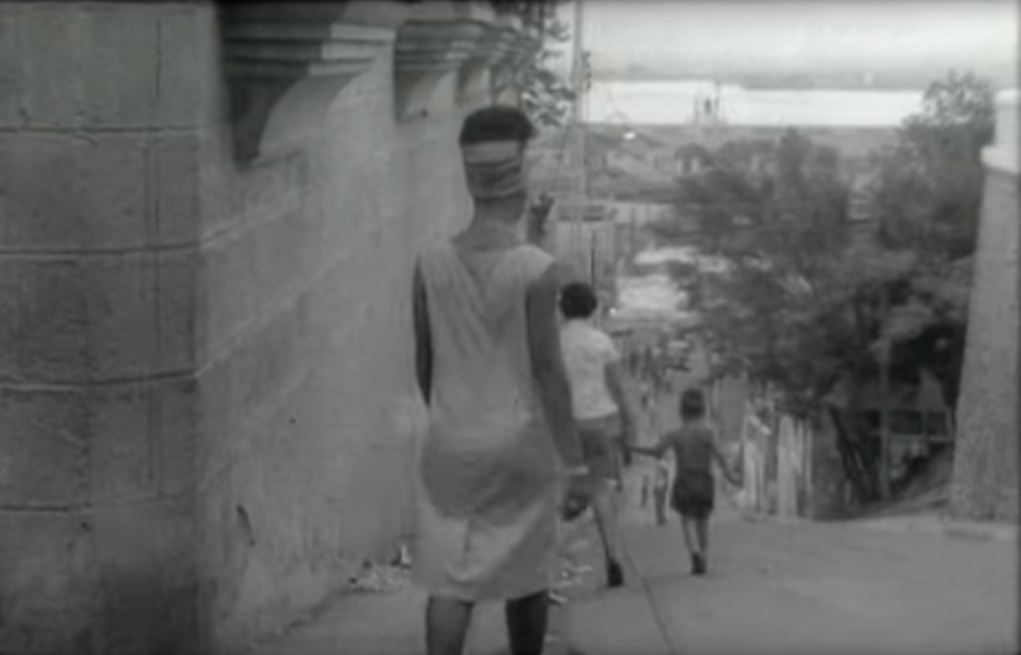
Jean-Luc Godard

Jean-Luc Godard died on September 13, 2022. At the time, I felt I needed to write something about him, but it took a lot longer than I expected. I went back and watched some films I’d seen before, and took the time to watch others I’d never seen. I would never pretend to understand Godard, but I feel a deep connection to him and his work. Having spent over a year watching his movies and reading about his life, I feel closer to him than ever.
I’m not sure what I want to say about Jean-Luc Godard, except that I’ll miss him terribly. There are other people who are better qualified to talk about his work, and I doubt Godard would want anyone to bother with a eulogy. It’s hard to explain why I feel so sad at his passing. He lived to be more than ninety years old, and made scores of films during his lifetime. I should be glad that he had such a long, productive career, and I am, but I’ll still miss him.
I didn’t like his work to start with. I probably saw À bout de souffle for the first time when I was around twenty, and it left me cold. Une femme mariée bored the hell out me. I didn’t know what to make of Pierrot le fou. It took a few years for me to find my way into his films. I remember I loved Une femme est une femme. Masculin féminin was really compelling. And I was knocked out the first time I saw Le mépris on a big screen. This last film is definitely an outlier, an attempt by Godard to make a commercial movie with known stars, and it is, in part, a self-conscious (and at times very funny) rumination on the tension between art and commerce. But it’s also breathtakingly beautiful, with stunning cinematography by Raoul Coutard and a melancholy score by Georges Delerue.

You could say Le mépris was an early expression of the tensions that Godard would be dealing with for the rest of his life. He loved Hollywood films, but he was also deeply suspicious, often contemptuous, of commercial cinema. Le mépris follows the individuals involved in making a movie out of the Odyssey, a mythic tale, but the producer is putting the screws on the director (Fritz Lang, playing himself) to make sure it sells lots of tickets. An ancient legend becomes another commodity that must compete for attention on the open market. And of course, as in so many Godard films, there’s the main character’s struggle to maintain his relationship with the woman (he says) he loves. The movie is a critique of storytelling, a critique of commercial cinema, and a critique of relationships.
Godard is always questioning everything. In his films, a good part of the dialogue usually involves questions and answers, or questions and evasions, or questions followed by uncomfortable silence. His films question the audience. His films question themselves. He may have been the most self-conscious of filmmakers. Prenom Carmen is a riff on Prosper Mérimée’s tale of obsessive love, adapted by Anne-Marie Miéville. In this version, Carmen claims to be making a movie, and seeks help from her uncle, a filmmaker played by Godard. When she comes to visit him in the hospital, she asks, “Don’t you want to know why I came?”, to which Godard responds, “Sure. That would make for good dialogue.”

Unlike a commercial film, Prenom Carmen makes no effort to convince the audience that what they’re seeing is “real”. The bank robbery where the lovers first meet is as absurd and over-the-top as a Monty Python sketch. While gunshots are still ringing out, a cleaning lady appears with a mop and a bucket and starts wiping up the blood. At the end of the film, Carmen’s gang attempts a kidnapping, using a movie crew to make it look as though the whole thing is being staged for the camera. The director makes it clear that the story is complete fiction. What is real in a film by Godard? The ideas are real. The emotions are real.
Some people may ask what kind of “emotions” I’m talking about in Godard’s work. He generally tends to observe his characters with a cool detachment, a dispassionate gaze. But actually, Godard is one of the most passionate artists ever to work in films. The most obvious expression of this is his obsessive exploration of relationships, generally focussing on desperate, confused men who are trying to connect with women who are mostly inaccessible. In À bout de souffle, Masculin féminin and Prénom Carmen we see lovesick men obsessively pursuing women who remain largely out or reach. Hélas pour moi tells the story of a god who assumes human form to make love to a woman he desires.
Godard was passionate about music, and music plays an important role in his films. Composers Georges Delerue and Antoine Duhamel wrote achingly beautiful scores for the director, giving expression to the feelings that his characters struggled to express. Godard also used existing music, often drawing on baroque and romantic composers like Bach, Beethoven and Dvorák, and he sometimes turned to works by 20th century composers like Dmitri Shostakovich and Giya Kancheli. (He was also fond of truncating his soundtrack, abruptly cutting the music off in mid-cadence. Remember, you’re not here to listen to music. Don’t ever forget you’re watching a movie.)
Godard was passionate about movies. He dedicated his first feature to Monogram Pictures, the low-budget studio that churned out cheap gangster flicks in the 30s and 40s. Une femme est une femme is a giddy to salute to, and riotous riff on, Hollywood musicals. His 8-part series Histoire(s) du cinema is an essay on film and its interaction with society. I think in many ways you could see Godard’s career as an obsessive exploration of the possibilities in film. He believed it had the potential to change the world, but he always seemed to feel that his own efforts failed to live up to that potential.
But I think more than anything else, Godard was passionate about ideas. He was a voracious reader, burning through fiction and non-fiction. He was fascinated by history, philosophy, sociology. His films are full of ideas, but even as he states his ideas he can’t help questioning them, and in some cases he then asks if he’s asking the right questions. Godard spent his life searching for truth, but he couldn’t accept anything as true until he’d looked at it from every angle. He seemed deathly afraid of becoming complacent on any level.
There’s no better example of this than the work he produced in his collaborative/collective period of the late 60s and early 70s. By the late 60s, Godard was feeling increasingly dissatisfied with his own efforts to create a truly revolutionary cinema, and decided that it was necessary to relinquish his control as an individual director/author. The view of the director as the author of a film was in conflict with Godard’s embrace of Communism. He first tried making movies in collaboration with individual filmmakers, and then became a part of the Dziga Vertov Group, a collective dedicated to bringing about a new political consciousness through a new political cinema.
Godard appears to have thought he was suppressing his own identity in order to participate as a co-worker in the collective, but honestly, I don’t buy it. To my mind, films like British Sounds/See You At Mao, Le Vent d’est and Tout va bien, all seem to flow directly from Godard’s work of the mid to late 60s. The static compositions, text inserts, and extended tracking shots that are so much a part of these movies can all be found in films like Weekend, La Chinoise and One + One. One of the few things that does separate the work he did with the Dziga Vertov Group from his earlier work, unfortunately, is that there’s nothing to laugh at in these overtly political films. They’re grindingly serious. You can find a number of wickedly funny moments in his 60s features, but as Godard came to be increasingly contemptuous of anything that might be perceived as “entertainment”, he seems to have felt it was necessary to drain these films of spontaneity, beauty and humor.
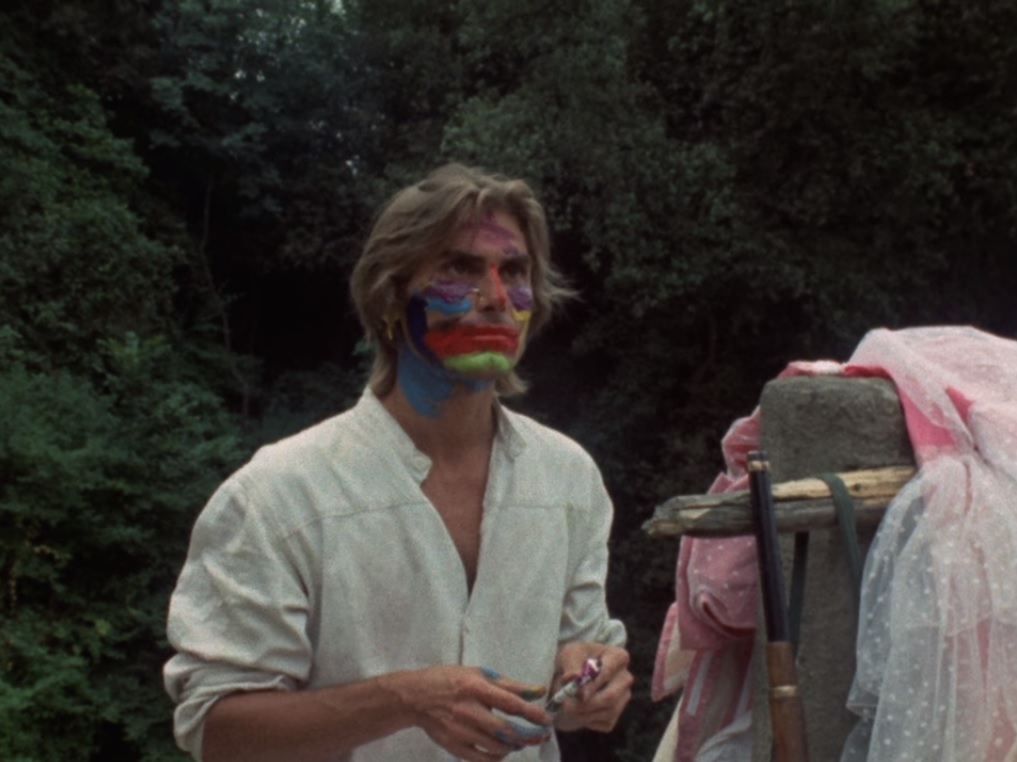
Not to say that there’s nothing interesting about these movies. In some ways I think they are truly revolutionary. Godard was trying to cut away everything that was false in movies, to get rid of phony narratives, seductive images and cheap manipulation. Instead of trying to recreate or represent reality, in these films Godard tries to put us in direct contact with the images and sounds that we encounter in the world around us. He was horrified by the “bourgeois” cinema produced by the film industry, and I think even more horrified by the possibility that he had become a participant in that industry. Unfortunately, I feel his work with the Dziga Vertov Group is often terribly dull and oppressive. The lack of visual dynamics, the absence of rhythm and the droning voiceovers would probably make them tough going for all but the most devoted admirers of Godard’s work. I respect his intentions, but I can’t follow him down this road.
Not surprisingly, Godard himself apparently became dissatisfied with this approach. As the 70s came to a close, Godard left off making overtly political films and started a new phase. Released in 1980, Sauve Qui Peut (la vie) tells the story of a filmmaker named Paul Godard who finds himself alone and afraid as his marriage falls apart. It’s a bitter, melancholy film, and it’s hard not to see it as at least partly autobiographical. But creating this new movie seemed to energize Godard, and he worked hard to promote it. He even referred to it as his “second first film”, and it seems to have been the beginning of another phase of his career.
In a way, you could say Godard had returned to the spirit of restless exploration that made his early work so exciting. He made feature and shorts, worked in film and TV, switched back and forth between fiction and non-fiction, sometimes mingling the two. He began exploring stories, sometimes recent ones, sometimes ancient ones. I want to emphasize that I’m using the word “exploring”, not “telling”, because the last thing Godard was interested in was unfolding a straightforward narrative. He wanted to take these stories apart and see what was inside them. He wanted to ponder the human needs, desires, frailties that gave rise to these stories in the first place. He wanted to see how they might relate to the world we live in. Anyone who watched Godard’s King Lear expecting an adaptation of Shakespeare’s play would be completely disappointed. Instead of adapting the play, Godard uses it as a starting point for a complex meditation on stories and the role they play in the modern world. He makes this clear in the opening sequence, where he juxtaposes “King Lear” with the words “A Study”, “An Approach”, and “A Clearing”. We follow William Shakespeare Junior the Fifth, a contemporary descendant of the playwright, as he tries to rediscover/reinvent stories in the world after the nuclear disaster at Chernobyl. The film does incorporate some quotes from Shakespeare, but it also draws on other sources, including Robert Bresson, Jean Genet, Viviane Forrester and Virginia Woolf. If you can let go of the original play, it’s a beautiful, allusive contemplation of primal mysteries. The images sketch a lovely, irrational poetry. The soundtrack is densely layered with voices, snatches of music, clattering plates and the cries of seagulls.
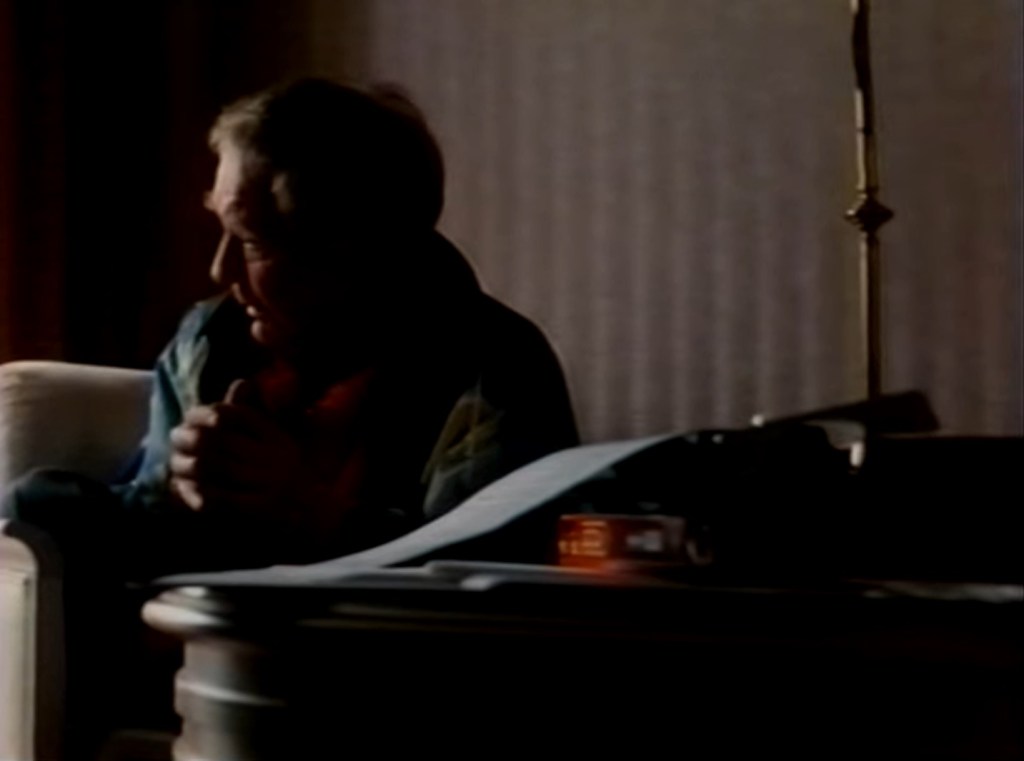
Godard’s King Lear also returns to, and expands on, the issues he explored over 20 years earlier in Le mépris. As it begins, we hear an audio recording where the film’s producer, Menahem Golan of the Cannon Group, is complaining to Godard about how long the production is taking. There apparently were a number of disruptions. Initially Norman Mailer was going to play the character based on King Lear, and he had written a script for the film. But Godard and Mailer had a falling out early on, and the author walked out on the project. Nevertheless, Godard includes a brief scene featuring Mailer, and a voice-over delivers a mocking commentary on the difficulties of dealing with “the great writer”. Apparently the screenplay was re-written by Tom Luddy and theatre director Peter Sellars, who also plays William Shakespeare Junior the Fifth. So we have a director playing the descendent of a playwright, whose mission is to rediscover stories in the modern world. In a voice-over Junior the Fifth explains that he’s working for the Cannon Cultural Division, a reference to the film’s producers. Just like Le mépris, Godard’s King Lear examines the tension between art and commerce, the problems in interpreting a text, and the relationship between a timeless story and the modern world. But in the later film, Godard piles on layer after layer of commentary, criticism and caustic wit. At this point in his career, the director seems to have given up on finding any answers, but he can’t help ruminating on the same issues that have fascinated him since the beginning of his career.
I think it’s safe to say that Godard’s later films are challenging for most viewers. They’re certainly challenging for me. Fragmented and elliptical, poetic and polemical, the later movies plunge you into situations with no explanation and overwhelm you with readings, recitations and rants. I saw Éloge de l’amour when it first came out, and while it struck me as very beautiful, I really had no idea what it was about. But watching it again recently, I found it was much easier for me to grasp the threads that Godard was weaving together. The film is a relentless exploration of the complexities of relationships, somehow merciless and tender at the same time. I was deeply moved.

Godard’s later films didn’t get widely distributed in the US, and I assume that’s at least in part because they could be so difficult for audiences. Take a look at the comments on IMDB for Godard’s later films and you’ll see that the viewers are mostly at opposite ends of the spectrum. You have the devoted fans who think his films are rich and compelling, and you have the other viewers who think the director is a pompous fraud who has nothing to say.
It’s hard to talk about “the audience” for films, because it’s not really a homogenous group of people all looking for the same thing. There are a million different audiences out there, and their tastes are constantly changing. But the films that have the greatest commercial success often seem to have two things in common: First, they’re fundamentally reassuring in some way; Second, they try to provoke a strong emotional response. Both of these things were anathema to Godard. I think he desperately wanted to connect with audiences, but he wasn’t going to tell them comforting stories and he wasn’t going to manipulate them. By refusing to play that game, he rejected the things that draw most people to movies, and made himself an eternal outsider.
We shouldn’t praise him or criticize him for this. It’s just who he was. I just said that he refused to play the game, but really, I don’t think he was capable of playing it. If you look at the writing he did before he even started making films, when he was contributing to Cahiers du Cinéma, it was clear even then that he was a stone iconoclast. As much as he loved films, he thought most of the people making them were clueless fools. I think it’s safe to say he felt that way to the very end. And as critical as he was of others, he could also be harshly critical of his own work. He didn’t cut himself any slack.
In the course of writing this, I watched a number of Godard’s movies, some that I knew well and others that I’d never seen. More than ever before, I was struck by the richness of his films and the range of ideas they explore. At times they seemed impossibly confusing and oblique. At other times they seemed incredibly beautiful and resonant. But they always impressed me as the work of an artist who was passionately in love with the medium. I think they’re also the work of a man who was obsessed with exploring the world he lived in, and who desperately needed to share what he’d found in the course of his explorations.
Like I said at the beginning, I’m glad he had a long life and that he made so many movies. But I’ll still miss him.

The Fugitive Kind (1960)
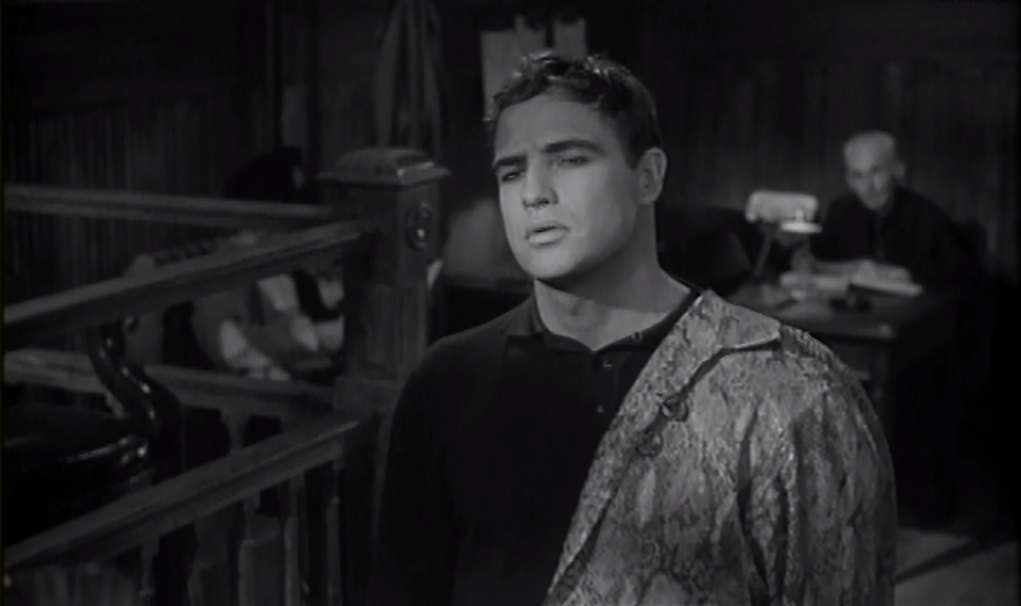
A drifter stands before a judge in a small courtroom in New Orleans. He tries to explain why, after being hired to entertain at a local party, he suddenly went wild and started raising hell. It seems he felt so disgusted with himself that he couldn’t keep from tearing the place up. He just couldn’t stand the life he was living any more. The judge asks the drifter what he’ll do if he goes free. The drifter says he’ll leave town and never come back again.
This is the opening scene of The Fugitive Kind, based on the play Orpheus Descending by Tennessee Williams, which debuted on Broadway in 1957. To give you an idea of how involved Williams was with the subject matter, that play had actually evolved from an earlier version called Battle of Angels, which he’d written in 1940. And the issues he deals with in The Fugitive Kind are variations on the themes he explored throughout his life. Innocence and corruption. Beauty and poetry. Desire and death.
Williams is riffing on the myth of Orpheus, which tells the story of a musician whose wife, Eurydice, dies. He’s so stricken with grief, he goes to the Underworld to find her and plays his lyre for Hades, the god of the dead. The music is so beautiful that Hades allows Eurydice to leave the Underworld, on the condition that Orpheus not look at her until they reach the world of the living. The two start on their journey, but Orpheus fails to heed Hades’ warning, turns back to look at his wife, and she’s lost to him forever.
There are actually several different versions of the myth, and Williams takes considerable license in updating it to reflect his own times and his own temperament. In The Fugitive Kind, Valentine Xavier is a drifter who wants to make a break with his past. He’s tired of his life and tired of the crowd he’s been running with. Val is a loner, an outsider. He refers to his guitar as his life’s companion. On the stormy night Val leaves New Orleans, he makes it to a small Southern town where his car breaks down. Trying to escape the pouring rain, Val seeks refuge at the local jail, where the sheriff’s wife lets him inside. The sheriff is out chasing a prisoner who has just escaped. As the two of them talk, the clamor of barking dogs is heard close by. Then gunshots ring out. Val knows the manhunt is over. While this town may be new to him, he knows these places well. Small Southern hamlets where intolerance and violence are the rule.
But Val is stranded. He needs a job. He ends up finding work at the local general store, run by Lady Torrance. Her husband, Jabe, is the owner, but he’s so ill he can barely get out of bed. In spite of his weakened state, he uses what energy he has to dominate and humiliate his wife. He’s a bitter, angry man, and he’s certain that his wife is interested in the good-looking young drifter she’s hired to work at the store.
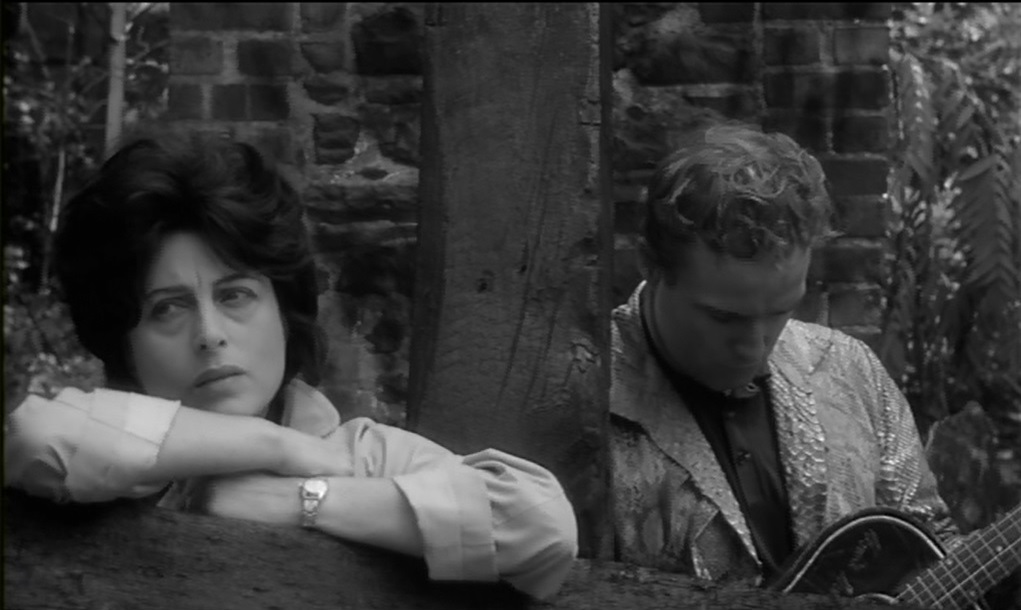
Which, of course, is true. It’s not long before Val and Lady find they’re drawn to each other. These are two lonely people, holding a lot of pain inside. In one scene Lady remembers the days when she was young and her family had parties in the wine garden built by her father. Those days came to an end when an angry mob burned it to the ground. The reason? Her father sold some alcohol to black men. The pain she feels from that loss is still very much with her, compounded by the pain of her loveless marriage to Jabe.
And Lady isn’t the only one interested in the newcomer. Carol Cutrere comes from a prominent local family. She used to be a starry-eyed idealist, but now she’s a rowdy drunk, driving around in her beat up car and raising hell. She’s suffering, too, but she doesn’t try to hide it. In fact, she does everything she can to rub her anger in the faces of the straightlaced locals.
Williams may have fared better than many writers when it came to film adaptations of his work. While it has its flaws, over all The Fugitive Kind is a beautiful and heart-rending film. The director, Sidney Lumet, was wildly erratic as a filmmaker. A fast worker, in the course of his career he made almost 40 features, and his filmography lists dozens of TV credits. Some of his work is so thin and forgettable you get the feeling he was just looking for a paycheck. But when he found a script he could really commit to (like Dog Day Afternoon or Before the Devil Knows You’re Dead) his work has a compelling immediacy and intensity. Lumet could be heavy-handed, and there are times when that tendency shows itself here, especially in the portrayal of Jabe. But he also seems to have had a special feeling for the broken, lonely people who can’t find their place in the world, which is what this film is about.
Lumet seems to have had a close relationship with cinematographer Boris Kaufman. They worked together on seven films. This was their third collaboration. Honestly, I can’t think of anyone better suited to this project than Kaufman. In addition to his enormous technical skill, he’s also a poet, and he gives us a number of images that echo the poetry in Williams’ lines. With carefully layered lighting he creates a sense of space in every scene. The jail, the store, the roadhouse, all feel real, but over all the film has an ethereal, ghostly quality. This is especially true of the scene where Carol drives Val out to the cemetery at night. As they talk their voices seem to fall into a vast silence. Carol tells Val that she can hear the dead, that they’re talking all the time, but they can only say one word. “Live.”
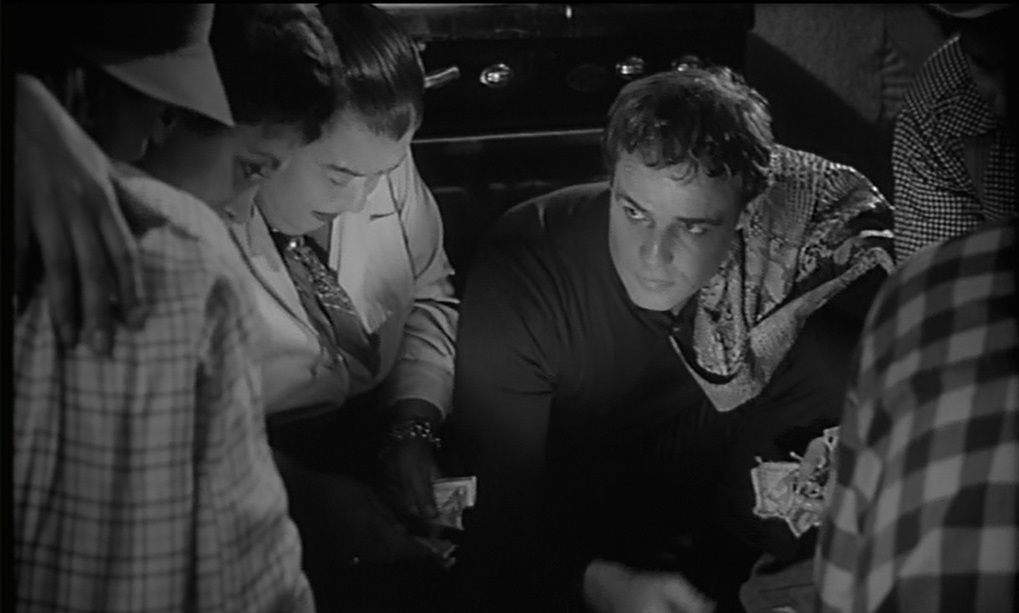
This is a quiet, melancholy film, and Lumet uses music sparingly. The understated score by Kenyon Hopkins is one of the composer’s best. As the opening credits are shown, Hopkins starts off with nothing more than a flute playing a simple motif, joined by broken chords on a guitar, as we gaze down a lonely road. While there are times where the composer brings in a larger orchestra, for the most part he keeps things low-key. The music reflects the deep sadness that haunts these people, but it also echoes their hopes.
To say that Anne Magnani is a powerful presence isn’t saying nearly enough. At times the emotions she’s expressing are so intense that it can difficult to watch her. She makes you feel Lady’s pain. This is a woman who is bitterly disappointed in the life she’s been handed, but she still holds on to a spark of hope that love could change her world. Though she’s worked hard to bury her emotions, you get the feeling that they’re always just beneath the surface, ready to erupt. When she does let go, the anger and pain is scorching. In a different way, Marlon Brando is just as powerful. Like Lady, Val is lonely. In spite of his surface cool, he really wants to connect with someone. He doesn’t really know where he’s going or what he’s doing, but he’s trying to build some kind of a life. Brando’s approach is understated, but he lets us see Val’s confusion, his loneliness, his longing.
While the tone of the film is mostly subdued, there’s a powerful undercurrent of violence running through it. This small town holds a lot of hate. Outsiders and outcasts are not welcome. If they fail to understand how unwelcome they are, there are frequent reminders laced with bloody threats. It’s no surprise that the film’s violent climax ends in death. But since this is Tennessee Williams, it’s also no surprise that beauty survives. As Carol muses at the end of the film, those outsiders leave tokens behind them, “…so that the fugitive kind can follow their kind.” We all die. Poetry lives on.
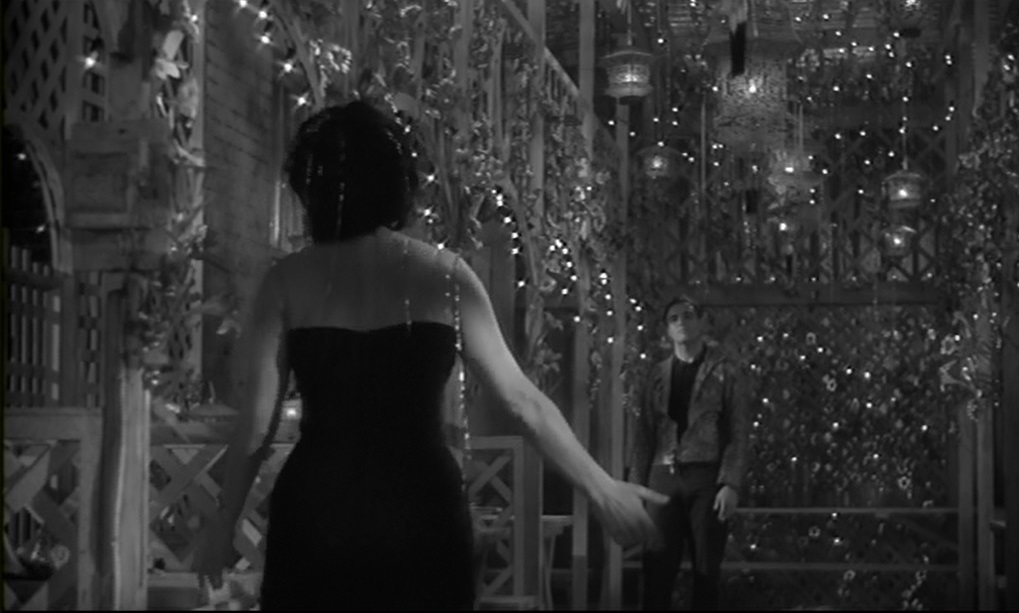
Bao gio cho den tháng Muoi [When the Tenth Month Comes] (1984)

When I watched Spike Lee’s Da 5 Bloods earlier this year, I was impressed. I thought it was the strongest film he’d made in a while. The script was interesting, the acting was excellent, and I felt he did a good job of using a genre movie to explore the complexity of the black experience during the Vietnam era.
Then a friend of mine, who’d also seen Da 5 Bloods, sent me an essay on the film by Viet Thanh Nguyen that appeared in the New York Times. Reading Nguyen’s piece was an eye-opener, and it made me realize how easily seduced I was by Hollywood genre tropes. He rips apart the myths that American war movies are based on, and talks about the anger he feels as a Vietnamese person watching the US mainstream media perpetuate destructive stereotypes.
Nguyen talks about the importance of Vietnamese people telling their own stories. That started me wondering. In a lifetime spent watching movies, I’d only seen one film from Vietnam. Did the country have its own cinema? If so, had it been around for any length of time? Does the country have an active film industry today?
The answer to all three questions is absolutely yes. It didn’t take me long to find out that the Vietnamese have been making films for around a hundred years, and they have a rich film culture which is still very much alive. Unfortunately, access to movies made in Vietnam is limited. Recent commercial releases are more or less easy to obtain, but many of the older films made by notable directors weren’t available to be streamed or purchased on DVD. This isn’t too surprising. Let’s face it. The US and Europe dominate film distribution in the Western hemisphere. It can be difficult, if not impossible to view films made elsewhere. (Japan being a notable exception.)
I went looking for a film about the war made by a Vietnamese filmmaker, and the title that kept coming up was When the Tenth Month Comes, directed by Dang Nhat Minh. The good news is, it’s available on YouTube. The bad news is, the quality of the digital transfer isn’t great, and the frequent commercial interruptions are maddening. Still, the movie is definitely worth watching.
When the Tenth Month Comes isn’t actually a war movie in the usual sense. It’s not about the soldiers on the front lines. Instead, it’s a meditation on the impact the war has on a single family. Duyên is a young woman whose husband has gone off to fight. Early on she learns that he’s been killed, but she decides not to tell anyone in her village, including her family. While she’s clearly afraid of how the news will affect her father-in-law and young son, it also seems that she’s in a state of denial. It’s as though by keeping her husband’s death a secret she hopes to bury the grief that’s welling up inside of her. In order to maintain the lie, she enlists the help of a teacher, Khang, who agrees to forge letters from her dead husband.*
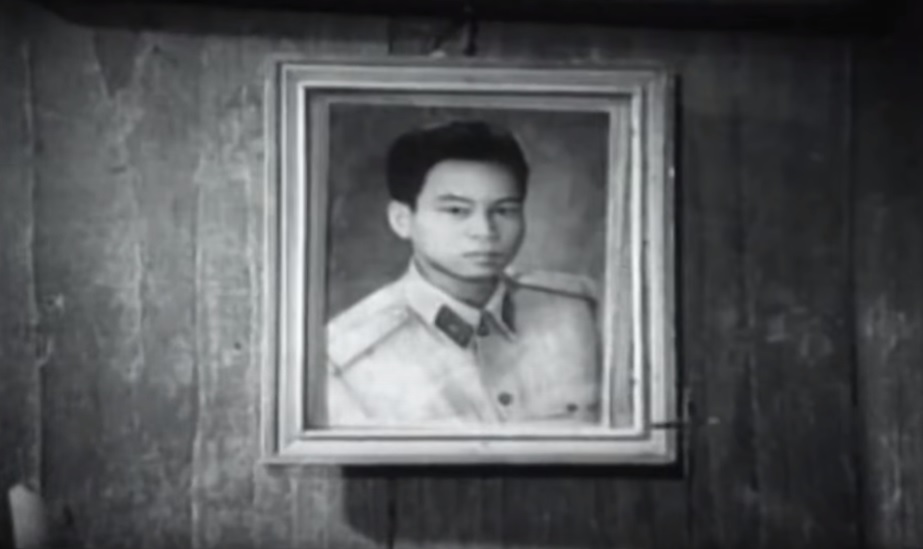
Shot on real locations, the film has a quiet naturalism that shows the people as part of the village, the village as part of the landscape. Minh lets the story unfold at its own pace, allowing the rhythm of life in the countryside to set the tempo. While the drama builds as the film progresses, he doesn’t push anything. Instead, he lets the emotional undercurrents build quietly, gradually breaking through to the surface. The performers don’t seem to be acting. Their interactions have an understated realism.
As Khang, Huu Muoi Nguyen let’s us know that the teacher’s calm, respectful manner is masking intense feelings that he’s reluctant to express. And at the heart of the movie is Lê Vân’s quietly powerful performance as Duyên. She’s also hiding fer feelings, but the actress allows us to see beneath the surface, subtly communicating the pain and confusion that she feels as wife, mother and daughter.
Again, When the Tenth Month Comes shows life in the village as an organic whole, and that includes folklore, song and theatre. Minh weaves a tapestry of rural Vietnamese culture, making the characters lives and experiences part of a continuous fabric. Rather than vanishing from the face of the earth, the dead live on as ghosts. One of the film’s most powerful moments comes when Duyên performs on stage as part of a local festival. While she can’t bear to tell her secret, she also can’t hide it completely.
Viet Thanh Nguyen is so right. The Vietnamese people need to be able to tell their own stories. The frustrating thing is, they have been telling their stories for decades, but because of the way the distribution of media is rigged, we hardly ever get to hear them. In spite of all the talk about the internet offering unprecedented access to books, films, music, etc., there’s still so much we don’t have access to. Part of this is due to greed, and part of it is due to ignorance, but another factor is our shameless laziness as insatiable consumers of pop culture. We keep getting the same thing over and over again because we keep swallowing the same thing over and over again. We won’t get anything different unless we demand it.
*
In reading about the film on-line, I found a number of different spellings for the names of the characters. In this post I went with the spellings most commonly used. If anyone who speaks Vietnamese wants to correct me, feel free to write a response to this post.
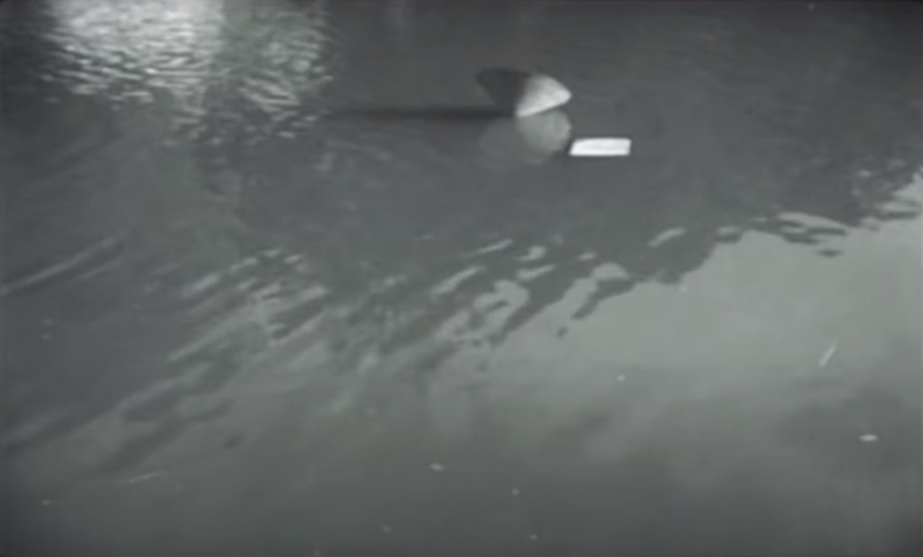
Help Small Movie Theatres Survive!
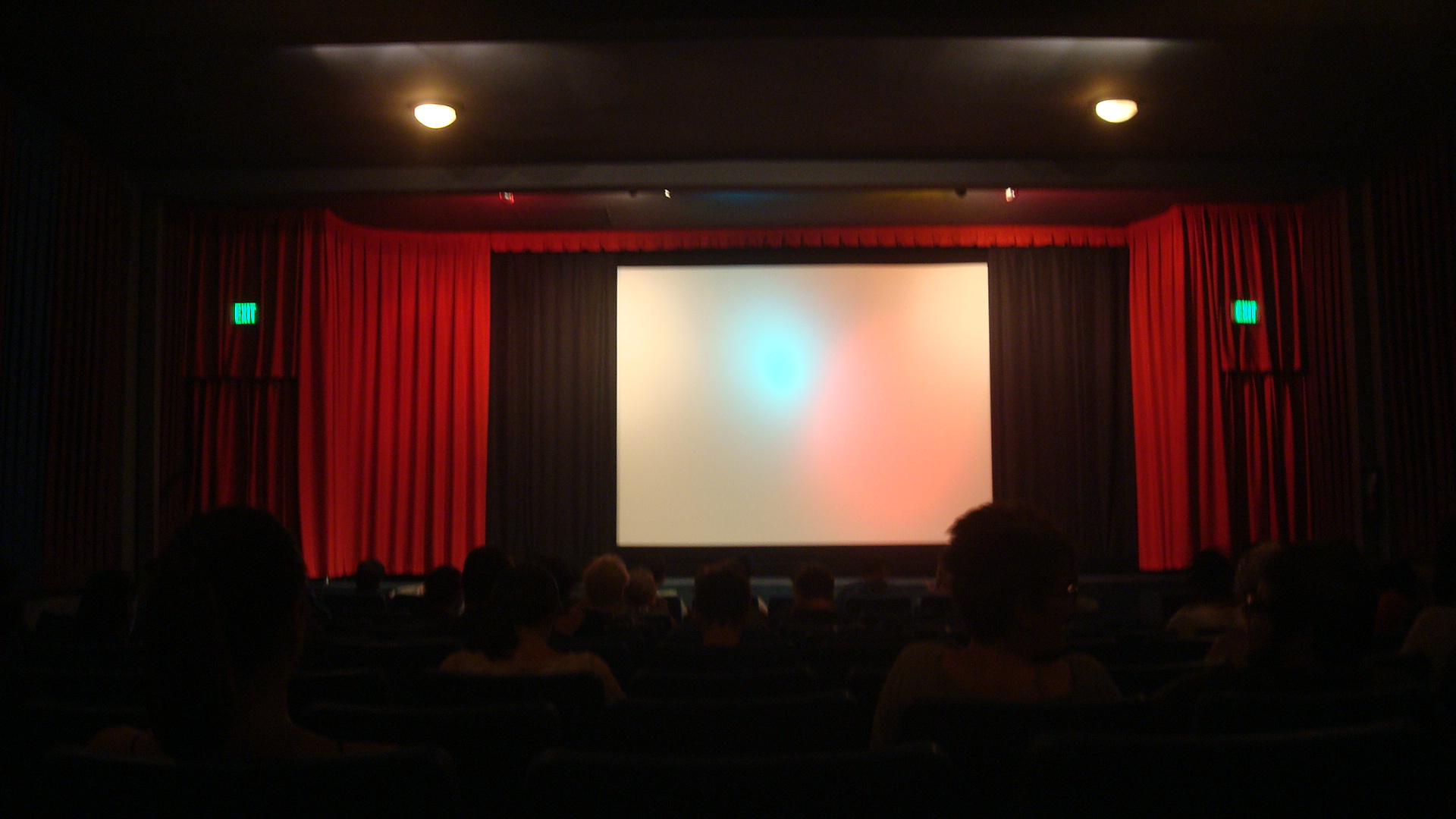
As I’m sure anybody reading this already knows, movie theatres are one of the casualties of the coronavirus outbreak. The big chains will be struggling, but the theatres that are going to be hit hardest are the small movie houses that show independent films and revival programming.
I was so glad to receive an e-mail from Criterion this morning, explaining that they were part of a campaign to help small movie houses through this tough time. Here’s an excerpt….
On Monday evening, Janus Films and the Criterion Collection contributed $25,000 each to establish the Art-House America Campaign, a fund to offer immediate assistance paying essential bills and key non-executive staff salaries. Most theaters will benefit from grants of $2,500 or more.
You can help, too. Follow the link below to contribute to the campaign. Think of the great experiences you’ve had seeing classic films on a big screen, the way they were meant to be seen. Or the amazing independent films you might have missed completely if your local art house hadn’t booked them. And then think about all the employees who work hard to keep those theatres running, and how many of them won’t be getting a paycheck until the pandemic blows over. If the theatre they work for can even reopen.
Twenty years ago there were a number of independent movie houses in LA. Now there are just a handful. Don’t let the coronavirus finish them off. Please give to the campaign.
Flamingo Road (1949)
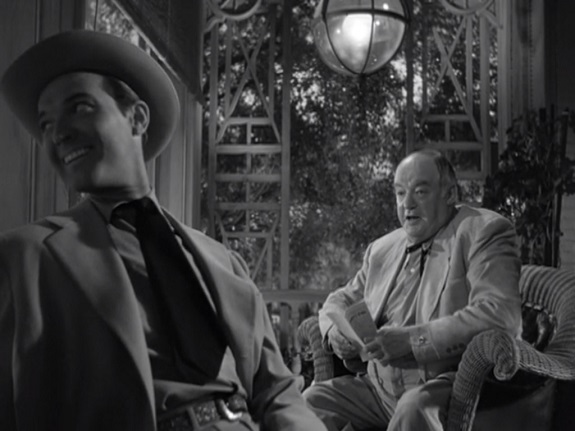
Zachary Scott and Sidney Greenstreet
Mildred Pierce is one of Michael Curtiz’ most famous films, and it may be the role that Joan Crawford is best known for. But a few years later the two collaborated on another film, which is lesser known today, but I think actually more interesting.
Flamingo Road tells the story of Lane Bellamy, a woman who we first see dancing in a cheap carnival, but who rises to become the wife of a powerful politician. The story is pure melodrama, but the film is an interesting study of power and corruption. The action plays out in a small town, and the title refers to the section where the rich folks live. When the carnival she dances in skips town to escape the law, Lane decides she’s tired of running and stays behind, going to work as a waitress in a local cafe. All she wants to do is work a job and make a living, but she inadvertently gets drawn into a conflict between two powerful politicians.
Lane is a woman living in a world run by men. She’s happy enough waiting tables in the local diner, but when she falls for lawman Fielding Carlisle she incurs the wrath of Sheriff Semple, who has other plans for his deputy. Semple has her fired, and tells her she’d best leave town. Angered by the way she’s been mistreated, Lane decides to stick around and goes to work as a “hostess” in a “road house”. Here she meets politically connected businessman Dan Reynolds, who is immediately taken with her.
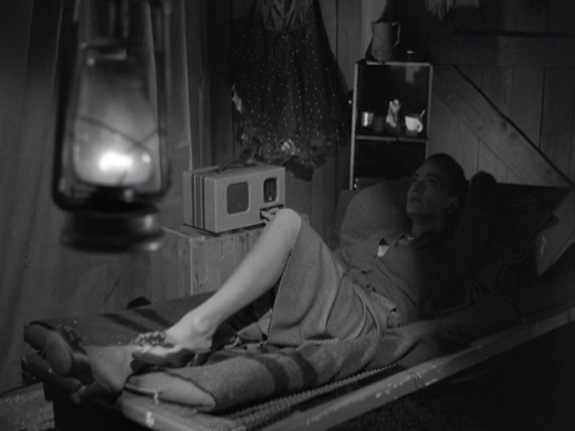
Joan Crawford, tired of running.
This sets up the conflict that drives the movie on more than one level. On the one hand, you have Lane growing closer to Dan, even though she’s still in love with Fielding. At the same time, Semple is infuriated by Lane’s rise in society, and ends up mounting a political attack on Dan as part of a power grab.
Robert Wilder’s screenplay offers a fascinating view of the way politics and business intertwine, showing how deals are made behind closed doors long before they ever see the light of day. (Wilder also authored the original novel, and adapted it for the stage with his wife, Sally.) Curtiz knows this territory well. In the later part of his career, the director made a number of films exploring the crooked world we live in, notably in Casablanca, but also in Four’s a Crowd, The Breaking Point, The Helen Morgan Story and King Creole. Lane, like many of Curtiz’ protagonists, is someone just trying to stay in the game even though she knows the deck is stacked against her. In the 40s and 50s the director repeatedly focussed on characters who struggle to survive in a world that seems bent on grinding them down.
The most complex character in the film is Dan Reynolds, the powerful contractor who falls for Lane. He’s essentially an honest man who knows that projects don’t get built on honesty. Dan understands that everybody’s looking out for themselves, and he’s willing to play the game, but he tries to make sure all the players get taken care of. Curtiz takes us into the smoke-filled rooms where local businessmen play cards, booze it up, and make deals. These scenes play out with a smooth, matter-of-fact ease. The screenwriter and the director both know this melieu, and they also know that, whether we like it or not, this is how the world works.

Playing cards and cutting deals.
There are people who say Crawford is too old for the role, but I disagree. I have no idea how old the character was in the novel, but I think the fact that Crawford was in her 40s when she played the part brings added layers to it. When we first see Lane dancing in the carnival it’s clear she’s been in this game way too long. A young woman might see it as an adventure. A middle-aged woman can’t see it as anything more than a way to make ends meet. After the carnival has fled, we see Lane by herself, lying on a cot in a tent, listening to the radio. She’s tired. She feels ground down. A younger actress couldn’t have expressed the weariness that Crawford brings to this scene. When the deputy walks in on her, she’s too tired to be fearful. She’s been hassled by the law before.
This is the kind of role that Crawford knew well. She probably could have played it in her sleep, but she’s not sleepwalking here. Lane’s weary cynicism rings true. The way Crawford plays the part, we know she’s been around the block a few times. And she makes her part in the love triangle believable. Lane likes and respects Dan, but she can’t get Fielding out of her mind. And when Dan realizes where he stands and walks out, Crawford makes us feel Lane’s misery and shame. Yeah, she’s done all this before, but she still does it really well.

David Brian and Joan Crawford
David Brian has a smoothness and an easy charm as Dan that makes it easy to believe he’s one of the boys in the back room, but he also projects a strength that makes it clear he’s got principles. He’s not just out for a buck. As always, Zachary Scott slides right into his character and makes us forget he’s playing a part. Maybe his unobtrusive skill is the reason his flawless performances never attracted the attention that lesser actors got. Scott shows us early on that Deputy Fielding Carlisle is basically a decent guy with absolutely no backbone. He loves Lane, but he won’t fight for her, and so he not only loses her respect but his own self-respect.
But maybe the most impressive performance in the film is Sydney Greenstreet as the Machiavellian sheriff. Greenstreet was a masterful actor, and he’s a powerful presence in this movie. There’s no ambiguity in the character. Sherrif Semple is absolutely ruthless and completely corrupt. So it’s impressive that Greenstreet’s performance is as compelling as it is. It could have been a total cliche, but the actor brings so much life to the role, he makes this vile old man so vivid, it’s hard to take your eyes off him.
Part of the reason this melodrama works so well is that the world these characters inhabit is so completely imagined. Curtiz was surrounded by technicians who were masters of their craft, and they were expert at creating cafes, carnivals and construction sites on a soundstage. Art director Leo K. Kuter and set decorator Howard Winterbottom breathe life into all the places and spaces that make up this small town. Ted McCord’s subtly textured cinematography brings everything together as an expressive whole. I can’t understand why McCord has never gotten the attention he deserves. A seasoned pro with an incredible eye, he had gift for creating images with depth and texture whether he was working on a set or on location. Curtiz and McCord worked together a number of times, which leads me to believe the director valued his abilities. I don’t see how anyone could look at his work on Treasure of the Sierra Madre, The Breaking Point, and East of Eden without coming to the conclusion that he was one of the best cinematographers in Hollywood.
I probably don’t have to tell you that Lane’s situation goes from bad to worse, until the film comes to a harrowing climax, and then quickly settles into a reassuring resolution. I’m sure you already know the territory. Curtiz knew it, too, and he knew he had to deliver what audiences expected. It’s not the big dramatic moments that make this film, it’s what comes in between. It’s the way the townspeople bend over backwards to stay on the sherrif’s good side. It’s the glimpses we get of men making deals over liquor and cigars. And it’s the way the director presents the poignant reality of a middle-aged woman stranded in a small town, trying to figure out what her next move is.
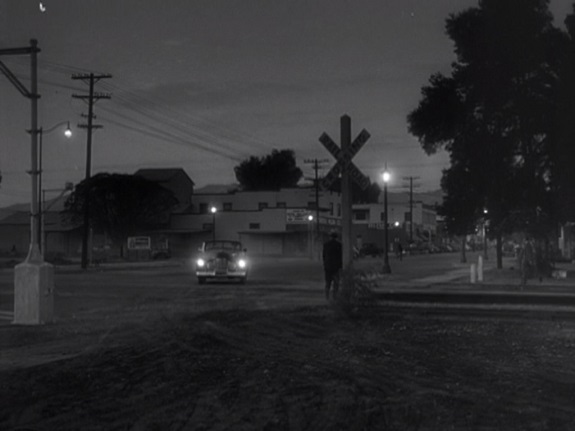
Dirty Pretty Things (2002)
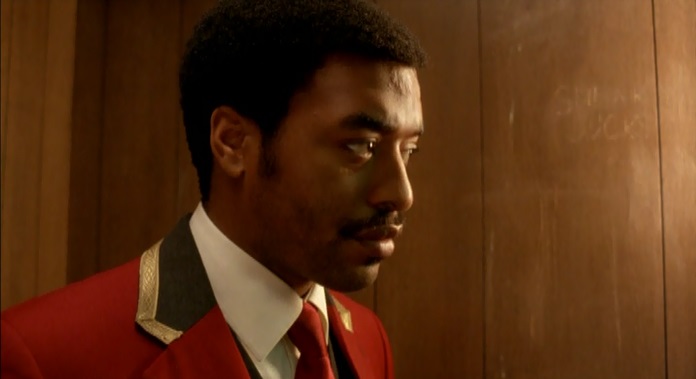
Chiwetel Ejiofor
The UN reports that we’re in the middle of the largest refugee crisis in history. All over the world people are fleeing their homes to avoid getting hit by a bullet or starving on the streets. Anyone who’s watched the news has seen the images of desperate men, women, and children waiting behind barbed wire fences or drifting on the open sea in makeshift boats.
But refugees have always been with us. Since the beginning of recorded history people have been leaving their homes behind to escape poverty or persecution. Often they gravitate to cities, where they might find a job, shelter, food. And while we don’t like to admit it, cities feed on refugees. People who are desperate to escape are easy prey. If they’re desperate enough they’ll work in sweatshops, hustle contraband or sell their bodies just to feed themselves and their families. And they better not complain, because there’s always someone ready to pick them up and send them back home.
Dirty Pretty Things is set in London in the early 2000s, and it brings us into the lives of people who are living on the fringe, working two or three jobs, renting a room illegally. Okwe is from Nigeria. He works the graveyard shift at the front desk in a hotel, and then during the day drives a taxi around picking up fares. He shares an apartment with Senay, an immigrant from Turkey, paying her cash to let him sleep on the couch. But this arrangement is illegal, because Senay’s legal status doesn’t allow her to charge rent or take a paycheck. So while she has a job cleaning rooms at the same hotel Okwe works at, she has to keep that a secret, too. These people live in constant fear of being caught breaking the rules. When immigration officials knock on the door, Okwe quickly grabs his few belongings and leaps out the window. Neither of them can afford a run-in with the law.
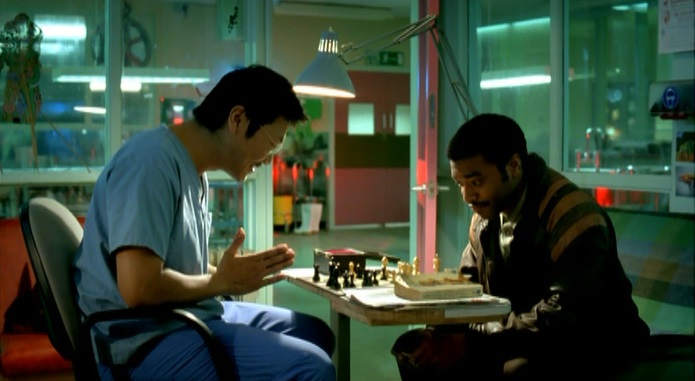
Benedict Wong and Chiwetel Ejiofor
Writer Steven Knight quickly pulls us into the shadowy world these immigrants live in. His characters are drawn in vivid detail, and while these particular people are very much a part of urban London, anyone who lives in a city will instantly recognize them. These are the folks who are just trying to make it through the day, keeping their heads down, doing everything they can to avoid trouble. There are threats on all sides, and the smallest misstep can wreck their fragile existence. Knight takes us on an intimate, uncomfortable tour of the dark side of this metropolis, showing us the London of sweat shops and sex workers, black markets and underground parking structures. The city feels like a sinister beast, feeding on the people who keep it running. Okwe has lived in London long enough to know that life is cheap. But he doesn’t realize how cheap until he enters a flooded hotel bathroom and finds that someone has tried to flush a human heart down the toilet.
The city is hungry, and needs to be fed. Okwe, a surgeon in his native Nigeria, learns that hotel rooms are being used for surgeries as part of a scheme to sell organs on the black market. The guy who’s running this ugly show is Juan, Okwe’s boss at the hotel. Juan is a happy capitalist. He sees no problem with what he’s doing, smiling as he tells Okwe that everybody benefits from the arrangement. The donors get cash they desperately need, the recipients get a new organ, and of course, he gets his cut for setting it up. And if the surgeries don’t always go smoothly, well, that’s just life. Juan finds out that Okwe is a surgeon, and immediately starts pressuring him to join the operation.
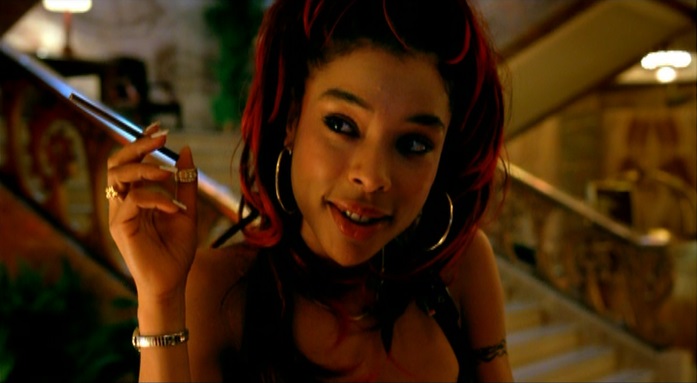
Sophie Okonedo
The cast is uniformly strong. Sergi López is maddeningly smooth and arrogant as Juan. He’s a master manipulator, sweet talking his marks at first, but always ready to put on the screws when that approach doesn’t work. Juan thrives in the city, because he sees the throngs of vulnerable immigrants simply as a business opportunity. People who live in fear are easy to exploit. Sophie Okonedo plays Juliette, a local prostitute with a breezy, pragmatic outlook on life. She’s tough enough to surive, but she has her soft side, too. Okonedo gives a lively and assured performance. As Guo Yi, Okwe’s friend who works at a hospital, Benedict Wong is both sympathetic and cynical. He brings a world-weary resignation to the role. He’s seen it all, and doesn’t have much hope of things getting better, but he still helps out when he can.
At one point Senay complains to Okwe that he never answers questions with yes or no. He’s always guarded. Chiwetel Ejiofor makes it clear that Okwe is a careful man, never revealing much of himself to anyone. He doesn’t talk about his past or his hopes for the future. He may be carrying a world of feelings inside, but he keeps those feelings to himself. Mostly. His heart aches for all the people he sees struggling to keep their heads above water. But Okwe has to keep his emotions in check. His survival depends on keeping his head down and playing along, so for the most part Ejiofor has to express his feelings in small ways, a look in his eyes, a subtle change in expression. It’s an impressive, complex performance. As Senay, Audrey Tautou also tries to keep her emotions in check, but they’re closer to the surface. Because she’s a woman, Senay is vulnerable to additional kinds of explotation, and the actress lets us see the deep anger and humiliation the character feels at being used by men. In Tautou’s performance we see a proud woman who’s determined to hold herself together, but it’s clear the sacrifices she has to make are taking a heavy toll.

Chiwetel Ejiofor and Audrey Tautou
Working in the realm of commercial cinema, it’s not easy to make films that honestly reflect the world we live in. Amazingly, Stephen Frears has made a career out of doing just that. Combining a deft and confident craftsmanship with a passionate interest in telling human stories, this director has worked in many genres, taken on a wide variety of subjects, and somehow kept audiences engaged. His clear-eyed, unsentimental approach gives his films an immediacy that most of Hollywood’s output lacks. While his work is technically accomplished, the focus is always on the people, and the goal is always to involve us in whatever they’re feeling.
Years ago I read an interview with Frears, and one thing he said really struck me. I may not remember the quote exactly, but I can give you the gist. The director was busy working on a new film, and the reporter asked if he was trying to make a work of art. Frears seemed taken aback, and then answered, “No, a work of life.”
Dirty Pretty Things is a work of life.

Films and Families
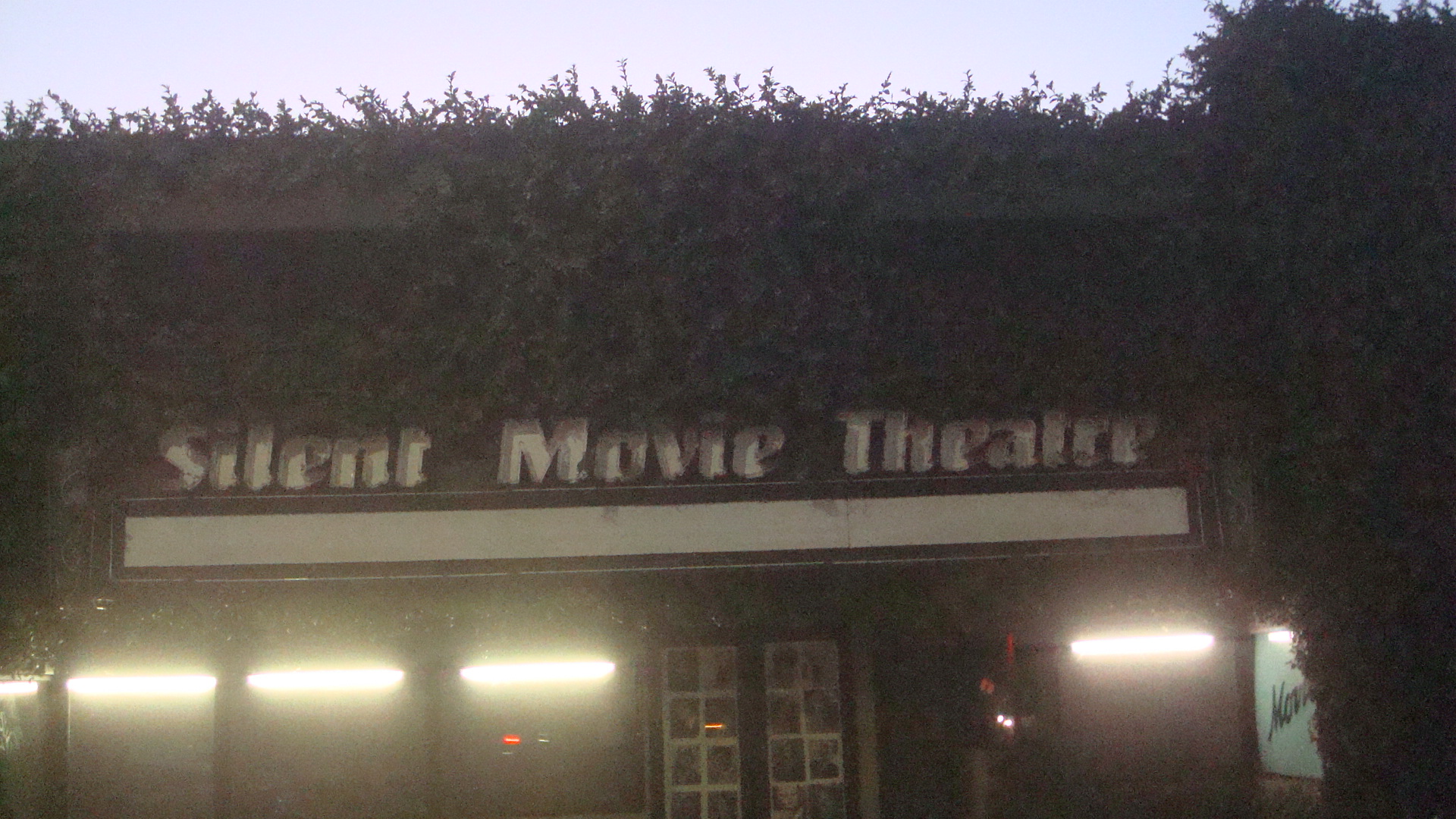
To anybody following the news over the last few months, it should be clear that sexual harassment and sexual abuse are rampant in our society. It’s not just limited to Hollywood or government. It’s part of the culture we live in. It can poison an institution. It can poison a workplace. And it can poison a family.
Cinefamily fell into all three categories. For years it was a key part of LA’s film scene and its cultural scene. It was a place where employees and volunteers worked long hours, knocking themselves out to deliver a diverse and innovative film program. And for the loyal audience it built, people who were passionately devoted to movies, it truly seemed ike a family. It wasn’t just about watching movies. A lot of people felt a deep connection to Cinefamily.
In August the news broke that members of Cinefamily’s leadership had been accused of sexual harrassment and sexual abuse. The LA Weekly and BuzzFeed News both interviewed former employees, many of whom described a toxic environment at Cinefamily and alleged that they had either been victims of or had witnessed various kinds of harrassment and assault. The two men who were the focus of the accusations resigned. After a couple months of uncertainty about whether Cinefamily could survive the scandal, the board released a statement saying that Cinefamly was shutting down.
It makes sense. It’s hard to see how Cinefamily could go on. But it’s a huge loss to the local film scene. Revival theatres and art houses have become scarce in LA. Competition from on-line media makes it easier to watch movies pretty much anywhere and any time you want. But even though new avenues for distribution have opened up in recent years, most movies were meant to be seen on a big screen and with an audience. It’s a shared experience. Even if you’re by yourself in a roomful of strangers. In fact, sometimes the fact that you’re sitting in a darkened auditorium, just one more stranger in the faceless crowd, makes the experience even more powerful. There are times when the audience reacts as one, when the movie you’re watching brings you together and makes you realize that there are basic feelings we all share.
A while ago I went down to the venue that Cinefamily called home, The Silent Movie Theatre on Fairfax. I wanted to take some pictures. It was sad seeing the place all closed up. But this isn’t the first time I’ve seen it go dark….
It started out in 1942 as the Old Time Movie Theatre. Though sound films had become the standard in Hollywood only a little over a decade before, silent films were already largely forgotten. But John and Dorothy Hampton kept Griffith and Chaplin, Pickford and Gish alive by screening their movies at the little theatre on Fairfax for 37 years. John was passionately devoted to the silents, and in addition to screening them he worked hard at restoring the prints in the collection he and his wife built. Unfortunately, John fell ill and the theatre closed in 1979. The Hamptons still lived upstairs during the following years, but the theatre was dark and truly silent. John died in 1990.
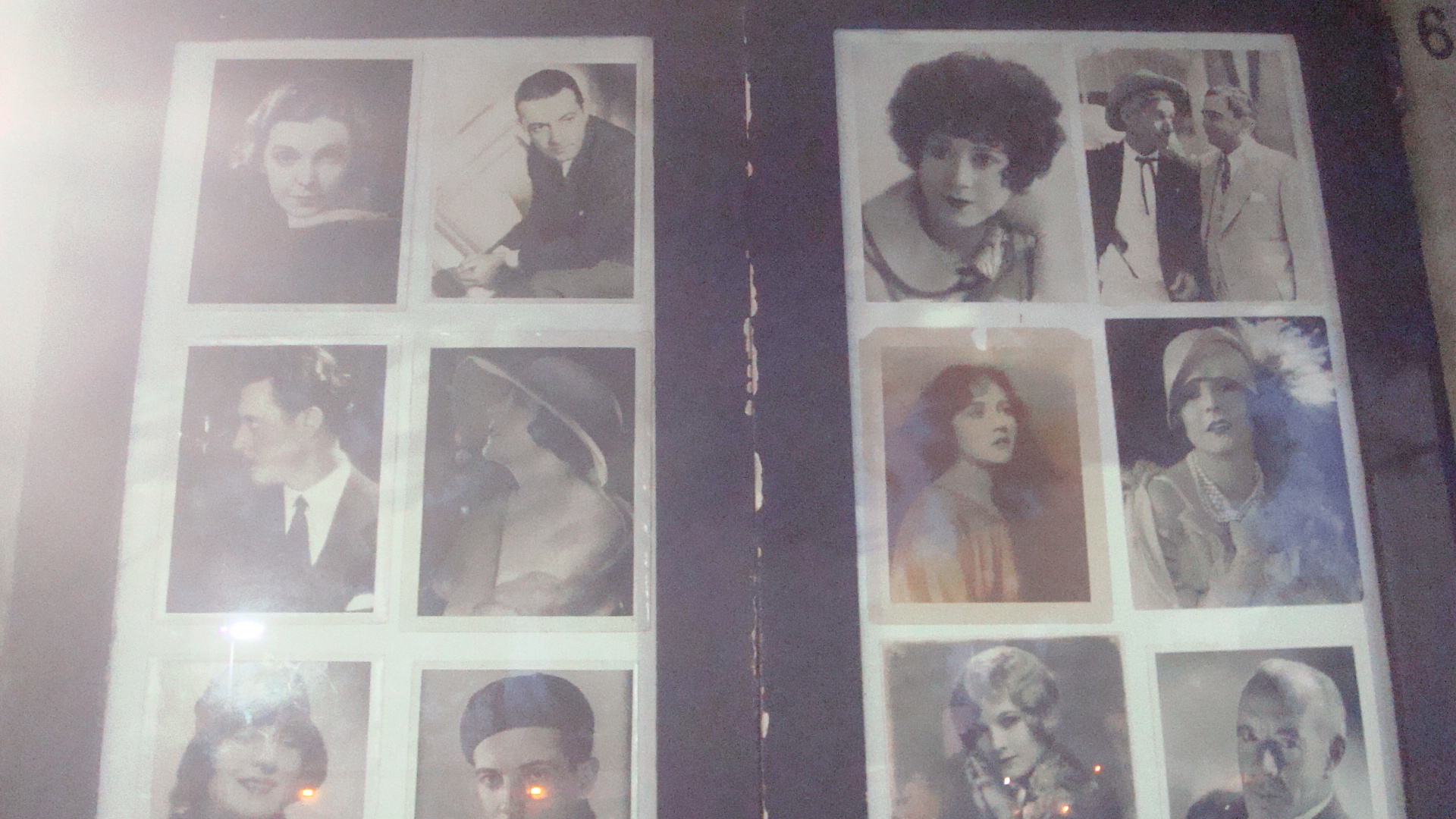
Photos of silent film stars on display in front of the theatre.
The theatre reopened in 1991, thanks largely to the efforts of Lawrence Austin. Apparently he had become acquainted with the Hamptons some time before, and together with Dorothy he brought the theatre back to life. Now called the Silent Movie Theatre, it offered pretty much the same programming as it had when John Hampton was alive, and it garnered a whole new audience. During the years that Austin ran the place he acted as MC, promenading down the aisle before every show as the accompanist who provided music for the screenings performed a playful march. (I remember Hail to the Chief, but other sources say it was Pomp and Circumstance. Both could be correct.) The elderly Austin always dressed formally, always held himself erect. You could see he took pride in presenting these films, and he introduced them to the audience as though the movies were old friends. Regular patrons grew to love him. For a while Dorothy continued working at the theatre, but suffering from Alzheimer’s, she eventually moved to a care facility. Austin had turned the theatre into a successful business, and at some point she turned ownership of the building over to him.
Then one night in 1997, while a movie was playing in the theatre, Austin was shot during what appeared to be a robbery. In reality it was a paid hit, financed by Austin’s partner, James Van Sickle, who was apparently named in the old man’s will. Investigators looking into the crime uncovered much more than anybody wanted to know. Both Austin and Van Sickle had criminal records. Dorothy Hampton’s family accused Austin of having stolen the theatre from her. It was an awful, depressing mess. Those of us who were mourning the closing of the Silent Movie didn’t want to hear the charges levelled against our old friend. It was bad enough to lose the theatre. Now it was as though our memories of it were being stolen.
The Silent Movie went dark again for over two years. It was finally reopened by Charlie Lustman, who fell in love with the idea of bringing it back to its former glory. He was passionate about reviving the theatre, first tackling the tough job of finding financing, and then the even tougher job of finding prints to screen. The box office was open for business again in 1999, and gradually a whole new audience discovered the films of the silent era. Lustman ran the theate for about seven years, but had to give it up when he fell ill with cancer. (Not only did Lustman recover, he turned his battle with cancer into a series of songs and then into a one-man show. Made Me Nuclear premiered at the Santa Monica Playhouse in 2008. He has continued to perform, travelling all over the US to sing for cancer pateints. Here’s a recent post from his Facebook page: “Good morning everyone. I know it’s cliche but I thank God for another day on Earth. Another day to be healthy or ill, rich or poor, happy or sad, for better or for worse…it’s just great to be alive” Check out the page for yourself: https://www.facebook.com/MusicalHOPECampaign)
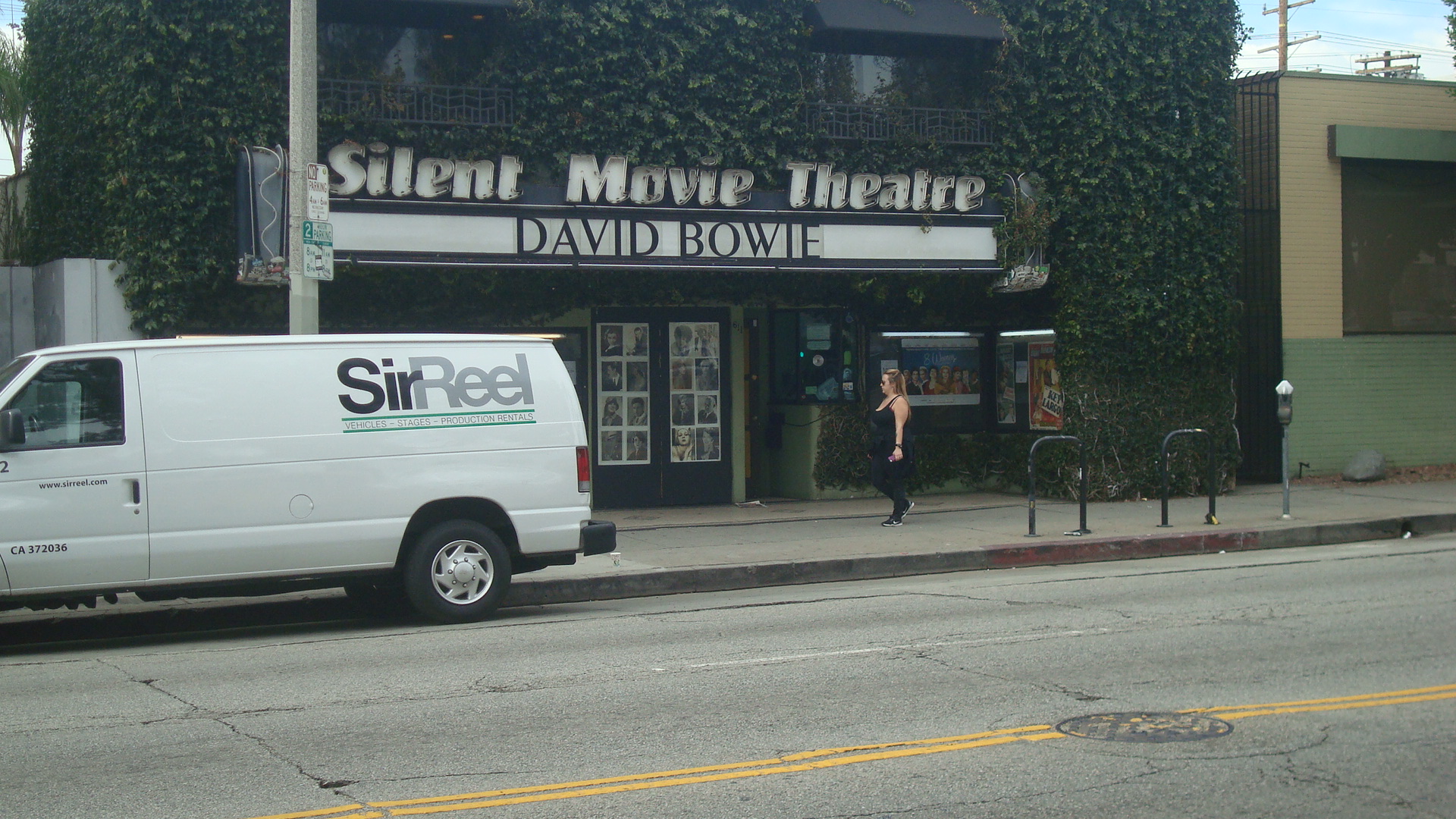
A shot of the theatre from the Cinefamily era, January 2016
Dan and Sammy Harkham bought the theatre in 2006, and this was the beginning of Cinefamily. Moving away from silent movies, the theatre began to show an amazingly eclectic mix of films under the leadership of Hadrian Belove. The programming ran from incredibly obscure oddities to crowd pleasing popular hits. I remember among the films I saw there were Film Socialisme and Breaking Away. I wasn’t a regular at Cinefamily, but I remember that when I did go there was a sense of cameraderie about the place. The employees, the members of the audience, all seemed happy to be there.
That’s all over now. As a result of allegations made by former employees and volunteers, Belove and board member Shadie Elnashai resigned in August. In November the board announced that Cinefamily was closing down.
The loss of the theatre is terrible. The loss of trust is even worse. In situations like this people often ask how it could have gone on for so long without coming to light. The answer is that none of us want to believe it. Movies can be lots of different things, but for many of us who love the medium, a large part of the attraction is the escape into a fantasy world. While we’re sitting in the darkened theatre we can be transported to a place where the cruel realities of the real world fade away. A classic Hollywood romance can make us believe that love conquers all. A sci-fi flick may take us to worlds we never imagined. Even a horror film can satisfy our need to believe in justice by showing how the wicked are always punished in the end.
But Hollywood is about manufacturing fantasies. And for as long as Hollywood has existed, there have been guys like Harvey Weinstein. It’s brutally difficult to acknowledge that the industry which has done so much to shape our culture has a long history of protecting sexual predators. But it’s true of Hollywood. It’s true of Washington. It’s true of Wall Street. And you can find the same dynamic at play in churches, in museums, in schools, and in our families. We don’t see it because we don’t want to. Which is why it keeps happening over and over again.
And so another family has been torn apart. The little building on Fairfax is dark again. And LA has lost much more than a place to see movies.
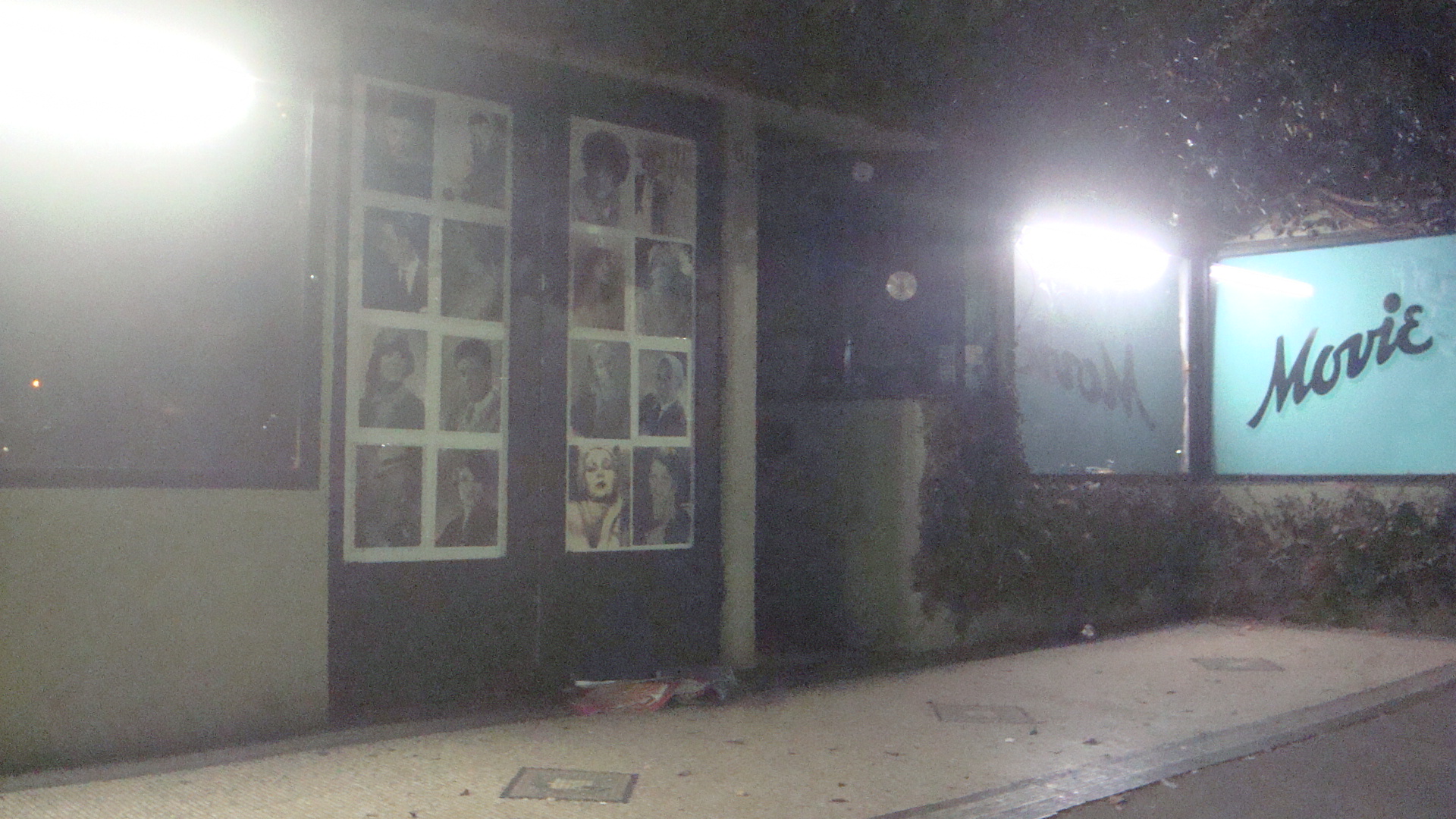
The Asphalt Jungle (1950)
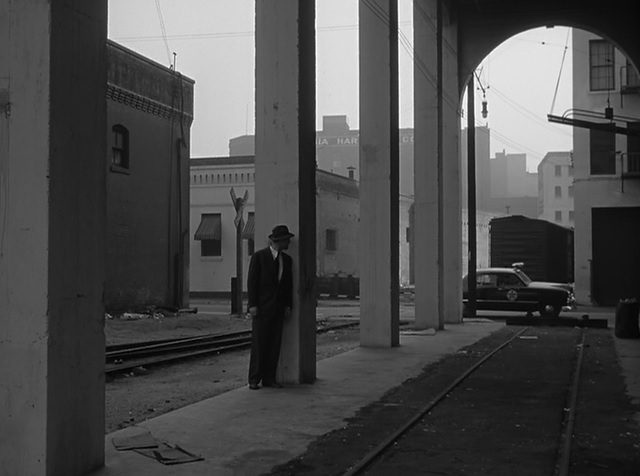
John Huston loved losers. While he worked in a range of genres and told all sorts of stories, he seems to have a had a special affection for the people who just couldn’t make it. Desperate prospectors looking to strike it rich. Cowboys trying to live in the past when the world was moving on. Fighters who kept climbing back in the ring after everyone else knew they were finished. Huston kept coming back to these people, following them as they lived their lives in the margins, fascinated by the way they kept hanging on after the world had given up on them.
Huston’s 1950 adaptation of W.R. Burnett’s novel The Asphalt Jungle is a terse and unsentimental look at a handful of thieves who plan a jewelry heist. But this isn’t a movie about criminals. It’s about people. These are guys who are trying to make ends meet, one way or the other. They may live on the wrong side of town, but they’re just trying to get by like anybody else. And as the story unfolds, we see that they’re not so different from the guys on the right side of town.
Huston doesn’t preach. (With one key exception, which I’ll get back to.) He just follows the characters as the heist unfolds, letting us get to know each of these men, allowing us to learn what makes them tick, what their frailties are. The director worked closely with screenwriter Ben Maddow on crafting the script. In his autobiography Huston says he had great respect for W. R. Burnett’s novel, and consulted with the author repeatedly while writing the screenplay.
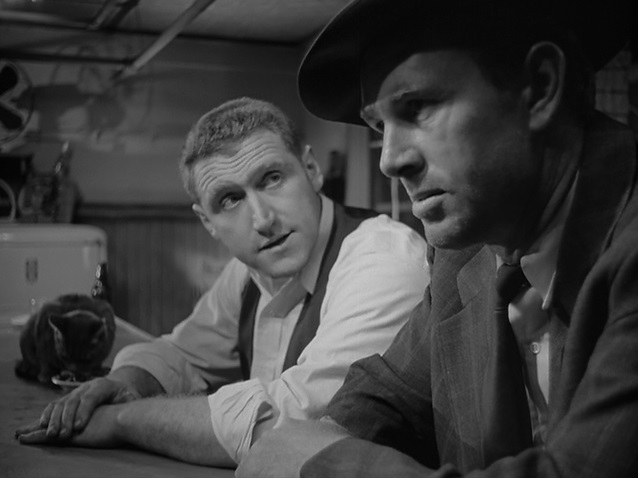
James Whitmore and Sterling Hayden
The story centers on Dix, a tough guy from the rural South. He has fond memories of the farm he grew up on, but he’s filled with anger over the way that life was taken away from him. The jewel heist could be the big score that allows him to get it all back. The plan is set in motion by Doc, a courtly German immigrant who’s just gotten out of prison. Doc is the mastermind, the man with a foolproof scheme for the perfect job. On arriving in town, he immediately connects with an underground intermediary and sets about choosing his team and finding someone to front them the money they need to get started. The backer they find is Emmerich, a well-respected lawyer who’s having cash flow problems, which seem to be tied to his young mistress.
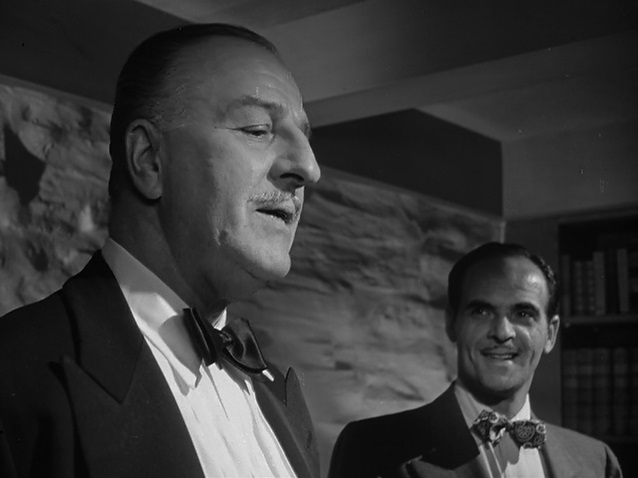
Louis Calhern and Marc Lawrence
The Asphalt Jungle is filled with character actors you may have seen many times, but you’ve probably never seen them better than in this film. Cobby is your classic simpering gangster tool, but Marc Lawrence makes his weakness seem all too human. James Whitmore and Anthony Caruso are both in fine form playing ordinary guys who are just trying to make living. To them the jewel heist is just a job. Jean Hagen’s performance as Doll is impressive in its directness. She doesn’t hide behind mannerisms or theatrics. She seems totally vulnerable, completely exposed. It’s a moving performance. Veteran Louis Calhern plays Emmerich, the crooked lawyer, with a degree of polish that speaks of his many years of experience on stage and screen. To put it simply, he’s a total pro. But he also lets us see the cracks in the smooth veneer, the brief hesitations where we glimpse his fear, the deep sadness in his weary eyes. In contrast to this seasoned pro, Emmerich’s mistress is played by newcomer Marilyn Monroe in her first significant role. She’s fine, but she doesn’t make much of an impression here. You don’t get a sense of the personality that would make her a star just a few years later.
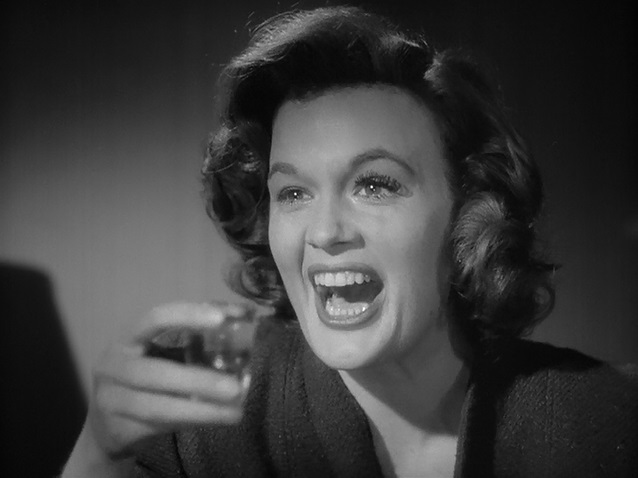
Jean Hagen
As Dix, Sterling Hayden is forceful and intimidating. In this film just his presence on the screen creates tension, in large part because of the anger burning inside him. It doesn’t take much to set him off. The threat of violence is always just below the surface. This makes for an interesting contrast with Doc. Sam Jaffe plays the older man as a thoughtful, businesslike planner, who (almost) never acts on impulse. The actors have an excellent rapport, and this makes their friendship believable. In spite of their profession, they’re both men of honor. They both have a code.
Huston respects these men, regardless of their faults. They may live by a different set of rules than you and I, but they do have a set of rules, and Huston doesn’t care which side of the law they’re on. Which is why the Commissioner’s stern speech to the press at the end of the film, where he lectures them on the importance of law enforcement, seems so completely out of place. The scene was so out of character for Huston that I wondered if he’d been pushed to insert it by the studio, possibly to counter the film’s portrayal of a crooked cop. But a look at the pages in the director’s autobiography that deal with The Asphalt Jungle don’t reveal any mention of studio interference. Whatever the reason for this scene, it’s a sharp departure from Huston’s usual perspective, and to my mind it’s the film’s only real flaw.
But in scanning Huston’s autobiography, I found out that he did run up against the censors on another scene. When everything comes unravelled and Emmerich is facing arrest, he decides to end it all. Huston initially had him going to his study, pulling out a gun, and blowing his brains out. But depicting a suicide onscreen was not allowed by Hollywood’s production code, unless the character was mentally ill. In order to appease the censors, Huston tweaked the scene to show Emmerich sitting down at his desk, starting to write a suicide note, tossing it away, starting another note, tossing it away, and then finally just pulling the trigger. This satisfied the censors by indicating that the character was unstable, and they gave it the go ahead. The way the scene plays out is a classic example of Huston’s laconic, hard-nosed approach, and he actually felt the changes made it stronger. We see a tight shot of the desktop as Emmerich makes his first, then his second attempt to leave a suicide note. Then his hand reaches into a drawer, removes a gun, and a second later we hear it go off. This one brief shot is an intimate glimpse of a desperate man’s last moments.
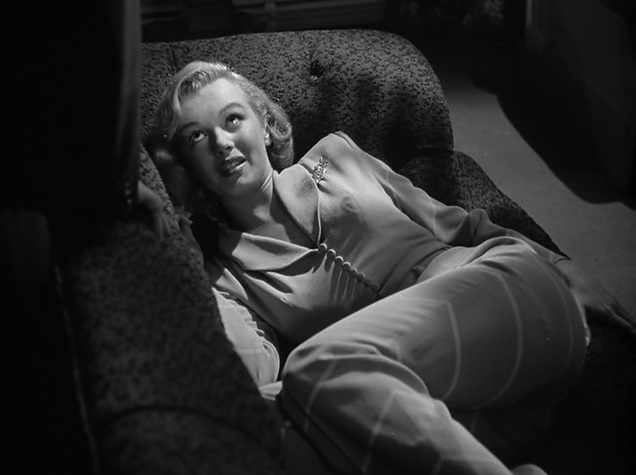
Marilyn Monroe
One of the ways Huston avoids sentimentality is by keeping the music to an absolute minimum. Miklós Rózsa’s score is limited to brief cues at the beginning and the end. The film has a spare, stark quality to it. Certainly most of it was shot on sets, but Harold Rosson’s visuals give the impression that the run down diners and cheap hotels are defined by whatever light happens to be in the room. And the people are defined by the rooms they occupy. The art direction, by Randall Duell and Cedric Gibbons, gives every space a distinct character, from the bare walls and wooden chairs of Cobby’s office to the lush comfort of Emmerich’s home.
Huston may be telling the story of a handful of criminals, but really he’s letting us take a look at ourselves. These men may be on the wrong side of the law, but they’re trying to find the same things we’re all looking for. They want to pay off their debts, buy a piece of land, escape to a place where life is easy and the sun is always shining. And they make terrible mistakes, because, like us, they’re blinded by pride, overconfidence, and greed. Huston would probably be the first to admit he was guilty of all three of these sins. Watching the films he made about frail, fallible, foolish people, we may end up thinking about our own lives. All our dashed hopes. All the mistakes we’ve made. All our plans gone wrong.
